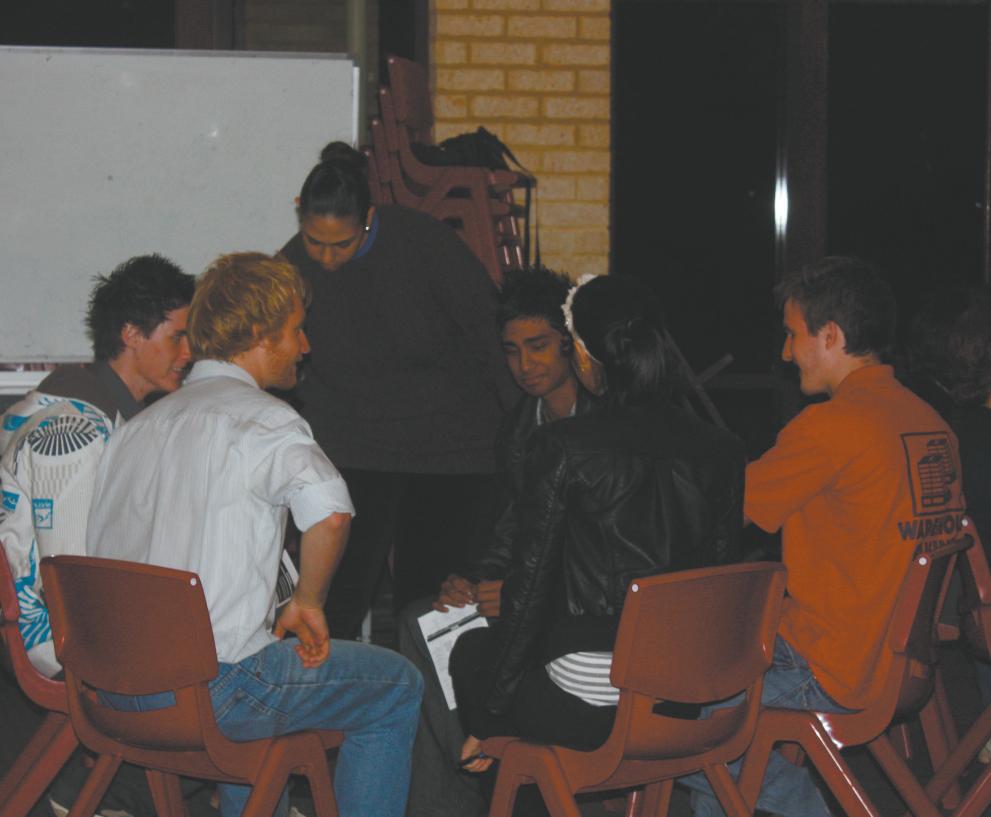













Earlier




H●
●
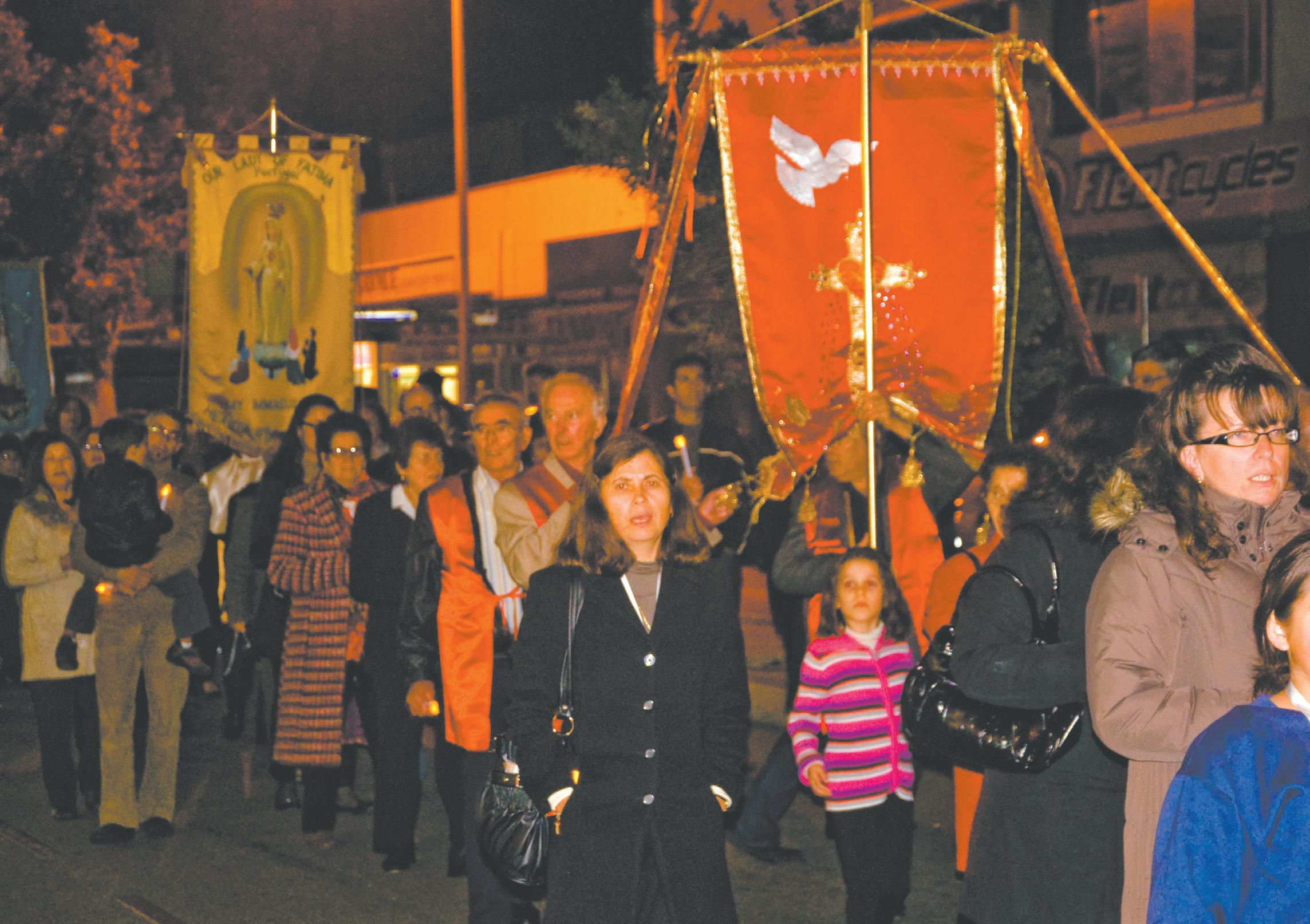
there was none? Do any of these questions resonate with you?
In November, this year, we will celebrate 30 years of marriage. We have always been in love and thought that our marriage
was pretty good. We knew God was in there somewhere, and although not exactly sure where, He was there. Our life was, and still is, very busy. Five children, work, family, friends, community
involvement, and the list goes on. Our life was good. About 4 years ago we decided to attend a marriage weekend recommended by a friend. When we mentioned it
Continued on Page 8



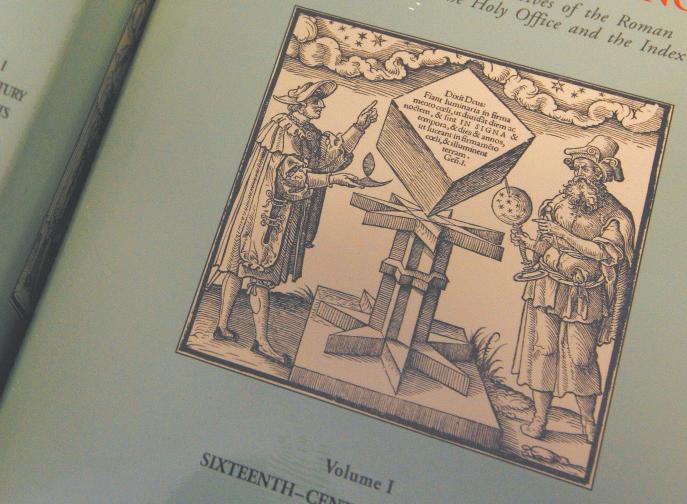

IT wasn’t Valentine’s Day but love a different kind was in the air in the parish of Lockridge when Mother’s Day was celebrated on 8 May.
It was apparent from the attention paid to detail both in the planning and execution of the celebration that the event, the brainchild of the Liturgy Committee, was motivated by a deep love and appreciation for the mothers in the parish.
The day began with the celebration of Mass specially offered for all mothers, by assistant parish priest Fr Pavol Herda, whose homily reminded the faithful of the unconditional love of mothers for their children.
The mothers in the parish were later welcomed by some of the husbands in the parish and ushered to properly set tables where breakfast was to be served later.
The kitchen was a hive of activity as a group of husbands, assisted by Fr Herda, slaved to cater for the crowd of approximately 70 diners; no mean feat. The mothers reportedly thoroughly enjoyed

the wholesome cooked breakfast served to them. Parish Council chairwoman Veronica Massang shared some her of experiences as a woman, a mother and a worker, aspects of which all mothers present could relate to.
By the end of the morning it became
clear that the group of husbands, aided by their hands-on assistant priest, had made some 70 ladies feel very special and very loved and felt humbled by the humility of Fr Herda and the husbands who went out of their way to serve them and to make this a Mother’s Day with a difference.


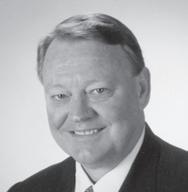
Editor
Peter Rosengren cathrec@iinet.net.au
Journalists
Bridget Spinks baspinks@iinet.net.au
Mark Reidy reidyrec@iinet.net.au
Anthony Barich abarich@therecord.com.au
Advertising/Production
Mat De Sousa production@therecord.com.au
Accounts
ON Easter Sunday, popular Redemptorist Fr Dan Magill died peacefully in his sleep at St John of God Hospital Subiaco, a day after expressing that this special day would have been a good time to die. Fr Dan’s gentleness, humour and down-to-earth love had touched many lives and a large crowd gathered to pay their respect to a man who was known for his great compassion.
Born in County Antrim in Ireland in 1924, Fr Dan moved with his family to the town of Matamata on the north island of New Zealand when he was three years old. It was an area famous for breeding horses, an interest that Fr Dan retained throughout his life, even having a horse and a race named after him.
In his younger days in his countryside home he had to work hard milking cows and ploughing paddocks.
He was one of three boys and his older brother, Fr John Magill, preceded him in entering the Redemptorist Congregation.
Fr John was Superior of the Redemptorists in North Perth when the Retreat House was built beside the monastery in 1967. Fr Dan’s first appointment to the monastery was in 1973.
As a Redemptorist priest, Fr Dan travelled the length and breadth of Australia and New Zealand preaching parish missions. In 1977 he was part of a six-man team who travelled in a kombi-van in outback WA and through to Darwin, conducting missions in many places on the way, including Mt Magnet, Newman and
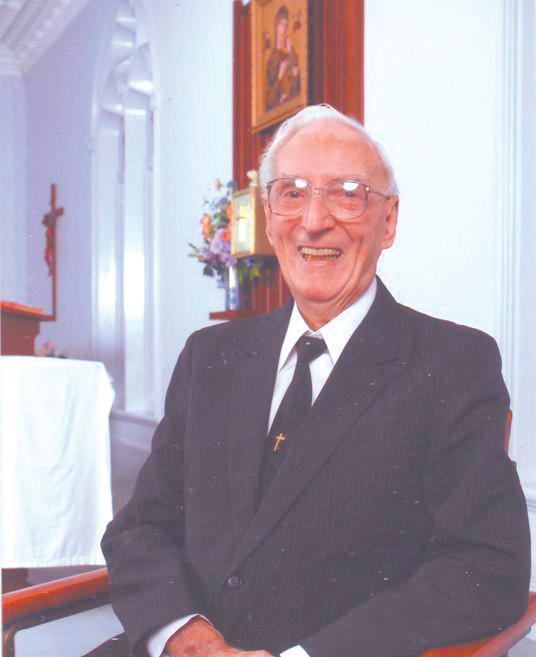
Paraburdoo. He, along with other missioners, would camp by the side of the road for several months and only return to Perth when the rainy season hit Darwin.
Fr Dan was also known as a great storyteller and a very popular preacher. He would often use his skills as a magician to draw people and such was his talent he was officially awarded membership into the Magicians Club. He never lost his taste for magic, and in his latter years he loved to perform tricks for young and old alike.
In his earlier days, Father Dan had a struggle with alcohol. Many years ago he was able to overcome this through his association with Alcoholics Anonymous. His contact with AA opened him up to a huge, lifelong apostolate. People struggling with alcohol addiction could contact him at any hour of the day or night, and he always made himself available to help them.
Due to Fr Dan’s efforts there are now eight AA Groups holding their weekly meetings at the North Perth Monastery.
Indeed his devotion to AA is a legacy that lives on and there were many members of the group in attendance at his funeral.
They were amongst a wide range of people who had been on the receiving end of Fr Dan’s heart of love and compassion.
In the latter part of last year, Fr Dan sensed that he might not have too long to live and one of the confreres jokingly suggested to him that he ought to get a good photo of himself taken for his obituary card.
Fr Dan readily accepted the idea and organised the photos, which were consequently used for his funeral booklet.
In the weeks before entering hospital in February this year Father Dan was still celebrating public Masses in the North Perth Monastery Church, hearing confessions and taking his turn to preach the Novena to Our Mother of Perpetual Help.
After a short illness, he left this life in a way that he had always hoped and prayed.

GOOD Shepherd Parish in Kelmscott welcomed St Joseph with open arms last Sunday evening when he came to the parish to stay for good.
A special Sunday evening outdoor Mass saw approximately 250 parishioners turn out for a long awaited event – the unveiling and blessing of a statue of St Joseph erected near the main entrance to the Church.
Only standing room was left by the time Mass commenced.
The statue had arrived in the parish some days earlier but had been kept under wraps by Parish Priest Fr Francis Sundararajan until the special ceremony.
It was an evening of real joy for the parish and for Fr Francis.
“For a long time I had it on my heart that we needed to have a statue of Joseph,” he told The Record later.
He said he had searched long and hard for available statues, finally locating the new acquisition in the US via the Internet.
Another reason for installing the statue, he said, was that many parishioners had informed him over the years of favours they attributed to the intercession of the great saint.
Before Mass Fr Francis blessed the new statue and then led the congregation in reciting the Litany of the saint.
Afterwards, parishioners gathered for food and an evening of catching up with each other, accompanied by music and dancing.
DO you have a parish story like this one? Send it in to The Record with your best 2 or 3 pictures.
Contact details: See column on left
Special issue of The Record entitled ‘Attack on the Centre’ draws criticism and support from clergy
BY ANTHONY BARICHPERTH priests expressed mixed reactions to the 14 April special edition of The Record reporting on the global media onslaught against Pope Benedict XVI on the issue of sex abuse.
Highgate parish priest Fr Peter Bianchini refused to distribute the edition that weekend in his parish, while others actively promoted it and expressed support for a resource to defend the Church from attacks over the sexual abuse scandal.
Fr Kazimierz Stuglik and Deacon Patrick Moore (Armadale), Fr Timothy Deeter (Mt Lawley), Fr Don Kettle (City Beach), Fr Oswald Lewis (Leederville) and Fr Joseph Rathnaraj (Kalgoorlie), among others, referred to the subject in their weekend homilies, urging congregations to take home The Record to educate themselves on the issue so they could defend the Church when asked and walk taller as Catholics.
All these parishes sold out bar Kalgoorlie, which nearly did. Yangebup, the biggest parish in Perth, also sold out that week. Fr Deeter ordered extra copies and promoted it again the following week, along with the next week’s edition. Fr Kettle also handed out prayer cards to pray for Pope Benedict XVI.
Seaton Parish in South Australia also ordered 225 copies of the edition and sold out, and several Australian Bishops contacted The Record congratulating it on its coverage
“I would’ve thought priests would be jumping up and down in joy at being given such a resource,” Fr Lewis, Leederville parish priest and chaplain of the local Burmese Catholic community, said when told that at least one parish had not distributed it.
“I told my parishioners they must buy that edition, as Catholics in the street are being accused of
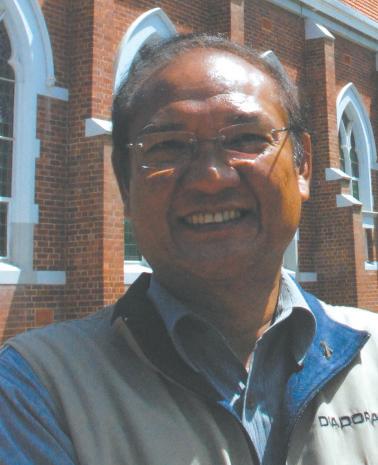
this as well as priests, and we must be educated so we can defend ourselves and our Church,” he said.
“I mentioned (the abuse issue) the week before on Good Friday, but I did not have the statistics available to preach on it. Now, thanks to the 14 April edition, I am well armed.”
Fr Bianchini, who is also national chair of the Australian Bishops’ Office for Clergy Life and Ministry, told The Record he took particular umbrage with the quote at the top of the front page from Pope Benedict XVI when Cardinal Josef Ratzinger during the Stations of the Cross meditations given for an ill Pope John Paul II at Rome’s Colliseum in 2005.
Then-Cardinal Ratzinger said: “How much filth there is in the Church, and even among those who, in the priesthood, ought to belong entirely to him.”
Editor Peter Rosengren said that The Record gave prominence to the quote as it evidenced the seriousness of the Holy Father’s approach, contrary to poor and seemingly vindictive secular media reporting, particularly from Germany’s Der Spiegel and the New York Times
For Fr Bianchini, however, it was the last straw after months of barrage from the secular press on the issue of sexual abuse had taken its emotional toll on him.
“I was pretty angry … I’m just sick to death of it,” Fr Bianchini said. “I really thought it [that quote] was the straw that broke the camel’s back for me. There’s been so much media focus on abuse, and now The Record is focusing on it too.
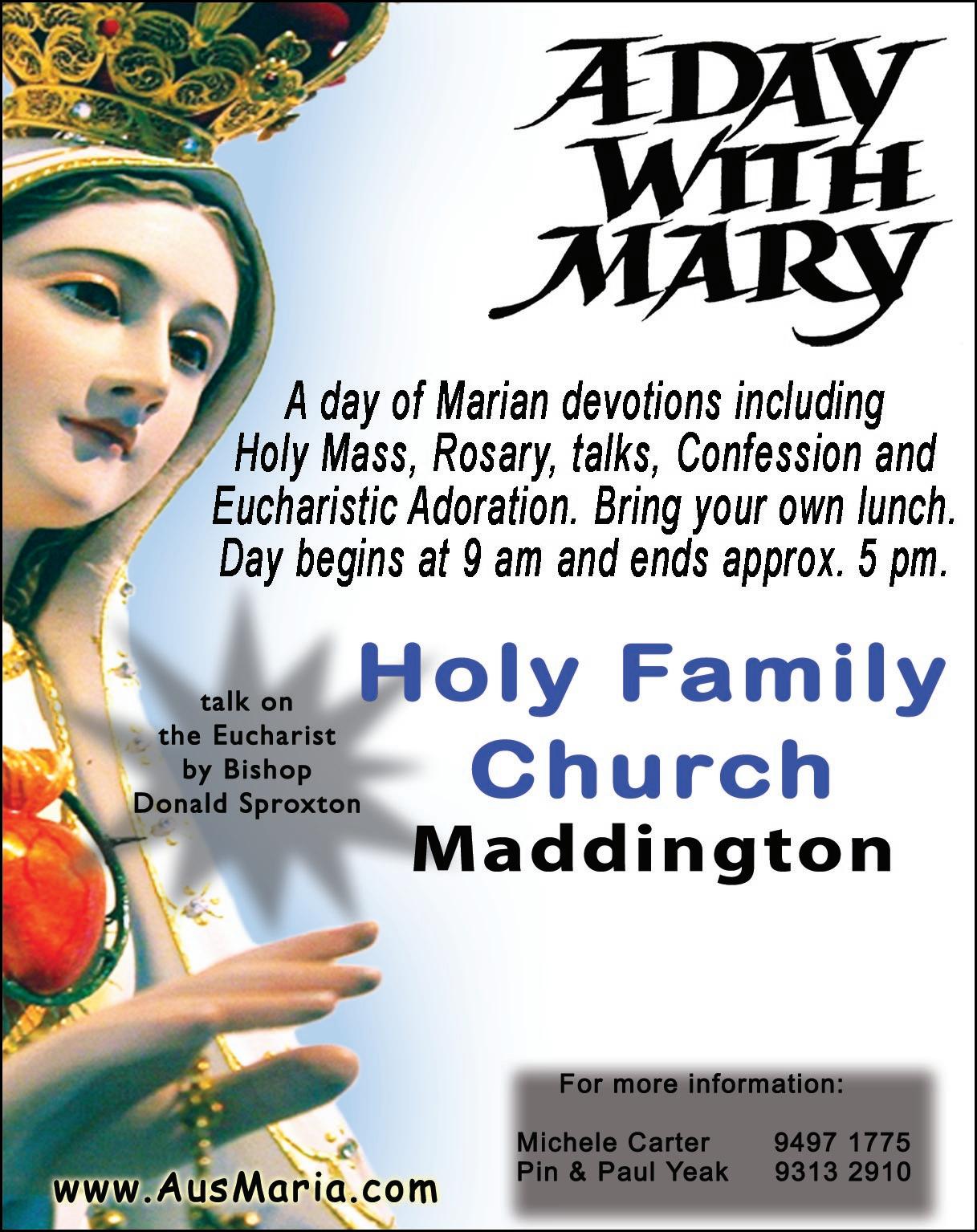

“I thought that, because of that quote (being given prominence), people would look at me and think ‘how much filth is in him?’ That floors me completely … it’s just another arrow for someone to fire at me. It affects me greatly. Every time I read about yet another priest doing something, I get despondent; I walk out the door and people look at you and say ‘you’re one of those’. When a situation comes up in Perth in the media, no one rings up a priest and says ‘this is happening, how are you feeling?’”
He said when parishioners noticed no Record in his church and asked him about it, he told them “It’s not there”, without adding any further explanation.
He said has addressed the need to assist priests with the ability to “stand tall in the midst of all this,” with Perth’s Archdiocesan Professional Standards Board.
Perth Vicar General Monsignor
Brian O’Loughlin said the sins of “a miniscule number” who have failed do not necessarily reflect on others. He added that the Archdiocese holds two priest retreats a year and is holding two residential professional development weeklong sessions from 16-20 May and 23-27 May - addressed by former member of the Pontifical Biblical Commission Fr Brendan Byrne SJ - where the issue can be broached.
Perth’s Archdiocesan Professional Standards Resource Group director Peter Messer said that while arming priests with the ability to be able to deal with these issues is a pastoral matter for the Bishops and Vicar for Clergy, he said The Record may not have


helped by devoting almost an entire edition to the abuse issue.
“The reality is that it’s not just the priests that are getting stabbed in the back, every Catholic gets attacked when (abuse) happens and is portrayed as aggressively as it has been in the secular media; so there needs to be a balance, which The Record provides,” Mr Messer said.
“What was in the (14 April) edition was excellent material and I would not criticise it, but I’d question one edition in which almost entire focus is on it; it may be more beneficial ensuring we’re not being scaremongers or being too apologetic, and spread the coverage over a number of editions.
“Otherwise it’s almost flooding the Catholic faithful with abuse issues, and if it’s all they read it can be somewhat deflating for many people, and just create more questions and pressuring their strength of faith.
“I’m extremely pleased The Record has been addressing the issue, the Catholic press can’t be seen to be ignoring it. That said, I was a bit shocked to find 13 pages were on abuse.”
Carmelite Fr Paul Maunder, parish priest at Morley, also said the amount of text devoted to the issue on 14 April was “overwhelming”, and that the “Attack on the centre” front page headline seemed “alarmist”.
However, he did not withdraw it from the parish as “readers have a right to decide for themselves”.
Claremont parish priest Fr Charles Waddell wrote in his parish bulletin that weekend that “I

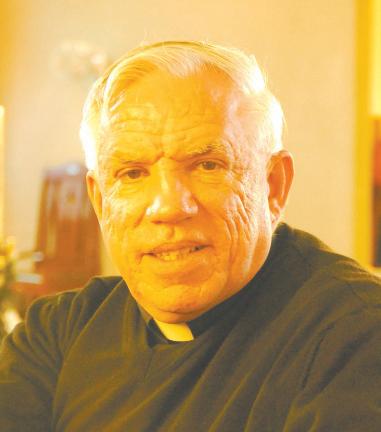
Requested more:
am disappointed with The Record this week”, adding that “The Record seems to report that media attacks on the Church are motivated by anti-religion or anti-Catholic positions”.
“While there may be some truth to this, there are other open, humble, constructive Catholic interpretations on this continuing news which are neglected by The Record,” he said.
He also offered some of his own interpretation “to try to balance what we read here at St Thomas (Parish)” in the bulletin.
As reported in 21 April’s Record, he said that the hundreds who attended Masses during the Easter Triduum and the media expect more from the Church – that it bring Christ to the world. However, he also said that “the media, at times seemingly viciously, reported the scandals in and of the Church”.
If you have an opinion on our edition, good, bad or otherwhise, send a Letter to the Editor.
Is it true our company philosophy is “We are a friendly and efficient company trading with integrity and determined to give our customers the very best of service?”


Is it true I believe that before anyone buys a pre-owned vehicle they should choose their dealer before they choose their car and that dealer should be me?
Is it true I say this, because of my reputation for honesty, fair dealing, huge range of vehicles and non pushy salespeople.
Is it true when people do business with me, I guarantee they will be treated with courtesy, sincerity, professionalism and efficiency?
Is it true that I have over 40 technicians who are dedicated to getting my used cars in first class condition before sale?




MUCH of the criticism of the Catholic Church’s handling of sexual abuse cases stems from a lack of knowledge about its historical context, said a policy expert who is set to address Australian lay, clergy and Religious in July and August.
The Australian Bishops’ National Committee for Professional Standards will host Monica Applewhite - an expert in screening, monitoring and policy development for the prevention of sexual abuse and risk management for those with histories of sexual offending – on 29-30 July in Sydney and 4-5 August in Adelaide.
Ms Applewhite, who has spent the past 17 years conducting research and rootcause analysis in sexual abuse and helping organisations develop best practice standards for prevention and response, told the National Catholic Register (NCR) on 15 April that newspaper articles have criticised officials for not reporting acts of abuse to the civil authorities in years when there were no child protective services and the particular behaviours involved were not criminalised yet.
It is fair, she said, for criticism of decisions made in the 1960s and ’70s to focus on interpretation of moral behaviour, weakness in the resolve of leaders or even the disregard of procedures set out in Canon law.
“By the same token, it is essential to separate this from expectations that are based on the laws and standards of today,” said Ms Applewhite, who has been involved in developing four national programmes in the US for child sex abuse prevention.
“We began studying sexual abuse in the 1970s, discovered it caused real harm in 1978 and realised perpetrators were difficult to rehabilitate in the 1990s. During the ‘70s when we were sending offenders to
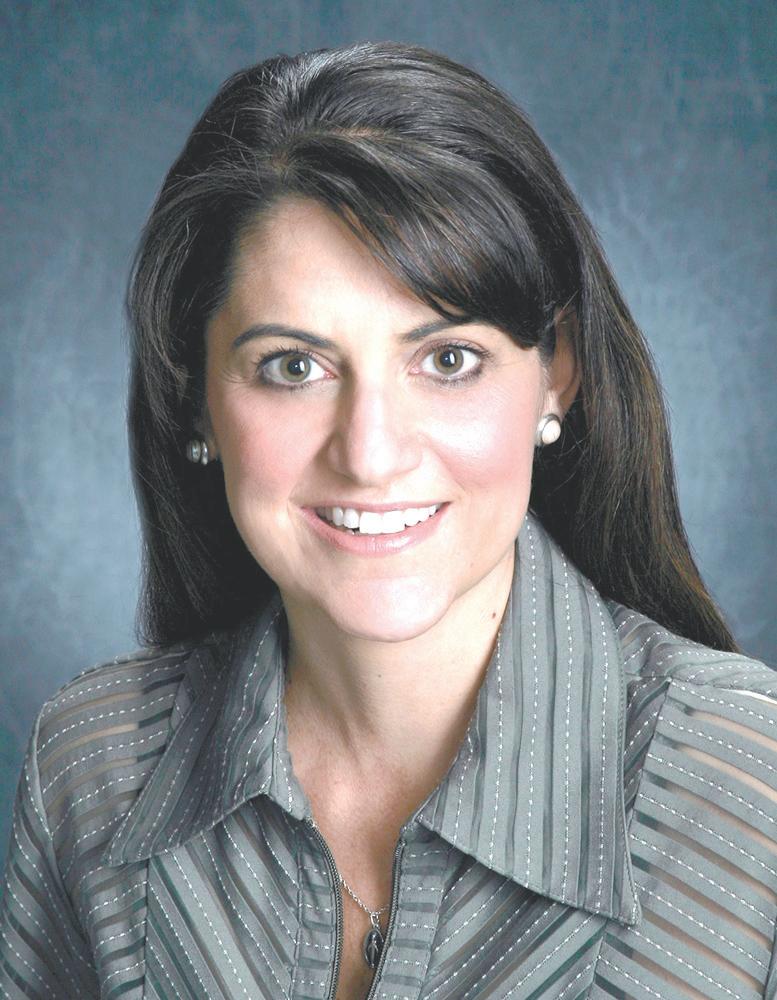
treatment, the criminal justice system was doing the very same thing with convicted offenders – sending them to treatment instead of prison. At the same time, it was believed they could be cured with relative ease.”
Her most pressing concern, she said, is the lack of protocols to guide the supervision and accountability for priests and Religious who have been accused or found to have sexually offended in the past or who have completed their obligations to the criminal justice system.
“There continues to be a belief that aging and the passing of time will render these men safe,” said Ms Applewhite, who has worked with over 300 organisations that serve youth, including the Congregation for Institutes of Consecrated Life and Societies of Apostolic Life in Rome, 28 Catholic US
dioceses and the US Conference of Catholic Bishops.
“I understand we cannot supervise them if they are no longer a priest or Religious, but as long as they are, we should strive to know how they spend their time and whether they are upholding the limits that have been placed on them.”
In July and August, Mc Applewhitewho has studied the Towards Healing, the Australian Bishops’ policy that governs the handling of allegations of abuse against Church personnel in almost all of the Church in Australia – will focus on the needs of Bishops and Congregational leaders, their Vicars, teams, delegates and Professional Standards personnel.
She will speak on care and response for those who report abuse, self-awareness and preparedness in walking with them, assessing risk for individuals who may have abuse or are at risk of abusing and working with Church personnel who have sexual behaviour issues.
Workshops at the conference will address the needs of formators and others involved in training, as well as recruitment and screening for volunteers or employees, including health, education and welfare personnel.
Of particular interest is her talk on The impact of abuse in the Church on priests and Religious men: understanding the past, living in the present and preparing a future of safe environments. This will also involve understanding the problem and who abuses.
In discussing “The practical issues of preventing abuse”, Ms Applewhite will discuss screening and selection for candidates and priests and Religious from overseas; formation in professional standards and behaviours, screening, selecting and training for employees and volunteers; and accountability, wellness and codes of conduct.
Vatican to standardise Professional Standards guidelines for dealing with abusive priests
BY ANTHONY BARICHTHE Vatican will prepare a set of new, more efficient measures to prevent sex abuse in the Catholic Church, Catholic news agency Rome Reports said.
The norms will be based on those adopted in the US following the abuse scandal of 2002 in that country, which have been credited with decreasing the number of sex abuse cases and have helped to teach over six million students how to recognise and report abuse, and also requires Church employees to undergo a background check.
Similar measures have been implemented in the United Kingdom and will soon be implemented in Germany where the local Church has over the past few months been beset with claims of abuse that occurred in the 1980s, and Austria, where at least 300 alleged clergy sexual abuse cases have been registered since February. It is understood that Professional Standards in the Church in Australia are consonant with those outlined by Rome Reports
Archbishop Luis Ladaria, the Secretary for the Congregation of the Doctrine of the Faith (CDF), is in charge of crafting the new rules which include a “fast path” to defrock priests who have been found guilty of abuse, according to Italian press reports.
The guidelines also include temporarily suspending priests who are under investigation, and reporting cases to police will be mandatory, as will the handing over of any documents relating to the investigation by Church authorities.
Unlike civil law, however, the Church will not establish a Statute of Limitations, so guilty priests can be punished even after many years of having committed the crimes. To get to the root of the problem, seminarians will face a more rigorous screening process, which will include

psychological tests on their affectivity and maturity. The Vatican will be in charge of ensuring all Bishops follow the rules so that Bishops’ conferences can take responsibility in combating and preventing abuse; those who cover up cases or do not implement the rules in a timely manner will be held accountable.
These new rules will complement those already in place. A department within the CDF made up to 10 people is in charge of investigating severe cases, and over the past nine years has investigated some 3000 cases of priests who have allegedly committed crimes over the past 50 years.
The number or reported cases in the Church is declining. While in the past two years, 250 cases were reported annually globally, the CDF suspects there could be more, as in countries like Italy a “culture of silence still exists”. There has been no formal announcement of the norms.
In 2001, then-Cardinal Joseph Ratzinger, now Pope Benedict XVI, suggested that all cases be handled by the CDF rather than the Congregation for Clergy.
Monica Applewhite, a consultant who helped create an accreditation system for the Conference of Major Superiors of Men in the US, told the National Catholic Register on 15 April that prior to 2001, cases of sex abuse were sent to the CDF, the Congregation for Clergy and some Religious communities sent cases to their own General Superiors. Since 2001, she said, the system has become much more uniform thanks to then-Cardinal Ratzinger.
She said that, importantly, the CDF gives support and credibility to Bishops and Superiors involved in disciplinary procedures, from removal from ministry to laicisation. Ms Applewhite was involved in US investigations and review of cases to be sent to Rome beginning in 1996, when the process was “very slow, and it was difficult to predict whether the evidence would be considered ‘enough’ for a conviction in the ecclesiastical system”.
Since 2001, the system has become much more uniform, she said. There is a ‘form’ of how to write up the case so all allegations and their outcomes are clearly documented and, with many trials held locally, the process is faster.
In 1992, the US Bishops fist began following ‘The five principles’:
● respond promptly to all allegations of abuse,
● relieve the alleged offender promptly of his ministerial duties and refer him for appropriate medical evaluation and intervention,
● comply with the obligations of civil law in reporting the incident,
● reach out to the victims and their families, and
● deal as openly as possible with the members of the community.
In 2002, Ms Applewhite said, the Bishops and Religious Superiors made commitments that addressed the fact that some leaders had simply elected not to follow the guidance of ‘The Five Principles’.
PRIESTS who previously relied on the Vatican to back them up when accused of sexual abuse can no longer do so because of the reforms put in place by Pope Benedict XVI in 2000.
So said a consultant for the US Bishops specialising in standards of care and the dynamics of abuse in educational and religious environments.
Due to the efforts of then-Cardinal Joseph Ratzinger as Prefect of the Congregation for the Doctrine of the Faith (CDF), the balance of power has shifted, said Monica Applewhite, who helped create an accreditation system for the Conference of Major Superiors of Men in the US to hold them accountable to the highest standards of child protection.
“It is important to know that in Pope Benedict XVI we have the individual who has seen more cases of sexual abuse in the Catholic Church than perhaps anyone else in the world. I believe he knows how serious the problem is and that he understands the sacrifices that have to be made to fix it,” she told the NCR
Ms Applewhite helped develop systems in the US in consultation with the US Conference of Catholic Bishops to hold offending priests accountable for how they spent their time, whom they visited and whether the people in their lives were aware of the sexual abuse they had committed.
She said that when she began working with priests who had sexually offended they would sometimes try to intimidate her with threats that if they “sent their case to Rome” to appeal how they were treated, that they would “win”.
“Many times I heard, ‘you are in violation of my rights’ and they felt they clearly had the upper hand,” she told National Catholic Register on 15 April.
“Since that time, and particularly since 2000, the balance of power has shifted. I have since worked with many priests and Religious who have sexually offended against minors and if you ask them today, they would be very unlikely to assume that “Rome” is on their side.
“Today, clerical and Religious sexual offenders recognise they can be laicized for their crimes for a failure to adhere to obedience.”
This gives much more leverage, she said, in terms of ensuring adherence to saftety provisions.
“Several men I know have ‘tested’ the CDF and found no tolerance for sexual abuse in the priesthood and no sympathy for the cleric who disagrees with programmes of prayer and penance.”
Evidence of where Pope Benedict XVI stands on sex abuse can be found in the fact that:
● It was he who declared the use of Internet and other forms of child pornography to be a “grave delict” (a civil wrong permitting compensation) – the same as a contact offense with a minor. He came to this conclusion at a time when many criminal jurisdictions were still debating the criminality of Internet porn.
● Victims of sex abuse who met with Pope Benedict in the US were “deeply touched” by their meeting, saying they felt like he knew their cases personally. “It is possible he did or that he has just known so many that are similar,” Ms Applewhite said. “I believe he knows how serious the problem is and that he understands the sacrifices that have to be made to fix it.”
● When he became Pope, he appointed Cardinal William Levada from the US –“clearly the country most likely to produce a stringent successor” – as Prefect of the CDF.
THE Towards Healing (TH) policy that has governed the handling of allegations of abuse against Church personnel in almost all of the Church in Australia since 1996 has been updated.
Approved by both the Australian Catholic Bishops Conference (ACBC) and the leaders of all Religious orders and institutes in this country, the policy was updated in 2000 and again in January this year.
The policy, downloadable from the ACBC website, contains both the philosophical basis of the Church’s attitude and handling of allegations of abuse and the formal measures to be enacted by dioceses when allegations are made.
Professor Patrick Parkinson, Dean of Law at the University of Sydney and a specialist in family law and child protection, ran a review of TH in 2000 and 2009, taking submissions from a wide range of people such as victims of abuse, advocates groups for victims, local Professional Standards officers, counsellors, lawyers and other practitioners who deal with abuse and Church authorities.
The Revised text reaffirms the principles of TH, clarifies the application of the TH procedures and seeks to simplify some of those.
All principles adopted in 1996 were reaffirmed in 2000 and have again been reaffirmed in the latest update.
In some cases, definitions have been enlarged. For example, in the 1996 version, physical and emotional abuse were not dealt with, but were in the 2000 review; in
ROME (CNS) -
lack of expert opinion in media coverage of the clerical sex abuse scandal has led to a climate of “moral panic,” which does nothing to help people understand the tragedy of abuse or keep children safe, said an influential Jesuit journal. By presenting existing problems as being brand new and not providing accurate statistics, media outlets have helped create a sense
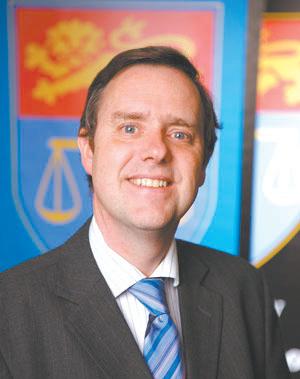
the latest update there has been further explanation of things like physical and emotional cruelty and inappropriate care in institutions such as orphanages.
Also among the features of the updated version is a 1800 number that can be called by anyone who wants to raise an allegation of abuse by Church personnel. The Professional Standards Resources Office, Perth’s Archdiocesan organisation that is the first point of contact for anyone wanting to claim abuse, is contactable on the same number. TH also sets out the process for making complaints, which can be prepared by the person alleging abuse or with the assistance of Mr Messer.
Mr Messer told The Record in a telephone interview that allegations cannot be of a second-hand or third-party nature but must be made by the individual claiming that they were abused.
The complaint is then forwarded to the relevant authority such as
of alarmism, and the resulting “moral panic doesn’t help anybody,” said La Civilta Cattolica
The media “distort people’s awareness of the problem and compromise the effectiveness of measures meant to solve it,” the journal said. The 15 May article was a follow-up to a 1 May article examining the social and psychological characteristics of sex offenders. The Rome-based biweekly magazine is reviewed by the Vatican Secretariat of State before publication.
The article, titled Fighting the Culture of Pedophilia, was written by Jesuit Frs Giovanni Cucci, a professor of ethics, and Hans Zollner, a licensed psychologist and psychotherapist.

the Bishop – if the complaint refers to a diocesan employee or official – or to the superior of a Religious Order or institute if the complaint is against one of their members.
A period of time is then extended to the relevant official to consider the complaint and to respond. Under TH’s procedures, an investigation can then be launched.
“Usually, some form of basic inquiry will be made,” Mr Messer told The Record
If the allegation is accepted, the Bishop or superior can then provide assistance in a variety of ways.
Assistance can include the provision of counselling and financial assistance to facilitate counselling and healing.
“We hope that the end result is that people are able to walk away with a sense of healing and reconciliation,” Mr Messer said.
However, if the allegation is disputed, the TH procedures require investigation by an independent third party, he said. This is conducted on the basis of the balance of probabilities, as it is sometimes difficult to ascertain precise details, he said.
“We always encourage the relevant authorities to have a facilitated meeting with the victim at which outcomes of the investigation are discussed,” he said.
Mr Messer said that TH operates across all of Australia with the exception of the Archdiocese of Melbourne, which has its own policy and procedures.
Perth Vicar General Monsignor
Brian O’Loughlin told The Record that the aim and implementation of TH – which he called a “proactive stance of the Church” - is in direct contrast to secular media and popular reaction, which “simply focuses on apportioning blame and the desire for compensation”.
“But that doesn’t necessarily address what’s happened to the
victim – and that’s where TH really looks at that healing of the victim and possibly in the restoration and treatment of the accused.”
In WA, those wanting further information or wishing to make a complaint of abuse can contact Mr Messer and the Professional Standards office for assistance and advice on 1800 072 390.



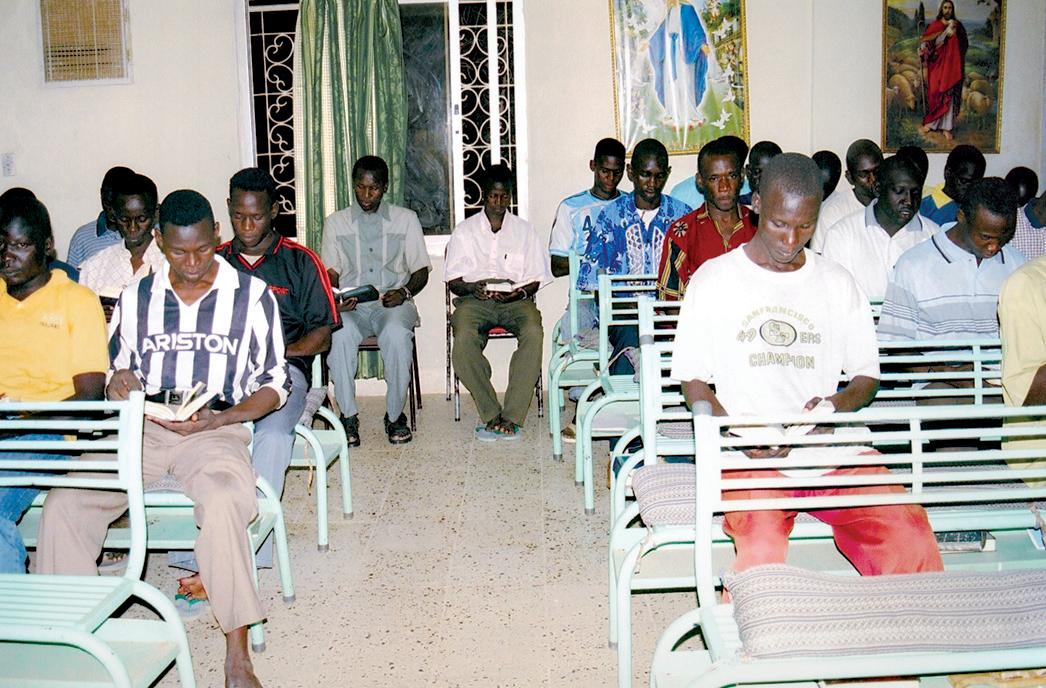






Take a Sydney pub and add hundreds of youth who are keen for wisdom and understanding, brought there by their natural desire to know more about God. It’s Theology on Tap - a crowd atmosphere of yearning for authentic learning. May’s ToT featured The Record columnist ANNA KROHN, Nashville SISTER MARY RACHEL OP, and Celebrate Love co-founder FRANCINE PIROLA as over 600 gathered to hear about...
What women really want is “intimate love” a guest speaker at this month’s Theology on Tap (ToT) suggested to a packed out audience at an Irish pub in Sydney’s west.
Intimate love is “a love that involves and recognises, includes and celebrates not only what they do or what they look like they do - but also who they are in their ‘inmost being,’” Anna Krohn, PhD student of Melbourne’s JPII Institute for Marriage and Family said.
“Now this is of course the way men want to be loved too - to be loved authentically, richly, with passion and with fruitfulness,” she added before addressing practically what kind of love women, specifically, yearn for.
Mrs Krohn, a Record contributor, was one of three women on the ToT panel for the month of May exploring the ever-intriguing, enduring conundrum of “what women really want,” where each panelist had 10 to 15 minutes to talk before the floor was opened for a Q & A.
Panellist, Sr Mary Rachel OP, a member of the Nashville Dominican congregation of St Cecilia, living in Sydney, spoke theologically about women’s aspirations - “from Eve to Our Lady”.
Francine Pirola, who is a coauthor and Australian co-founder of Celebrate Love (for married couples) and Embrace (for engaged couples), used literature - fairy tales and myths - to unpack and explore what women desire.
Women are often depicted in
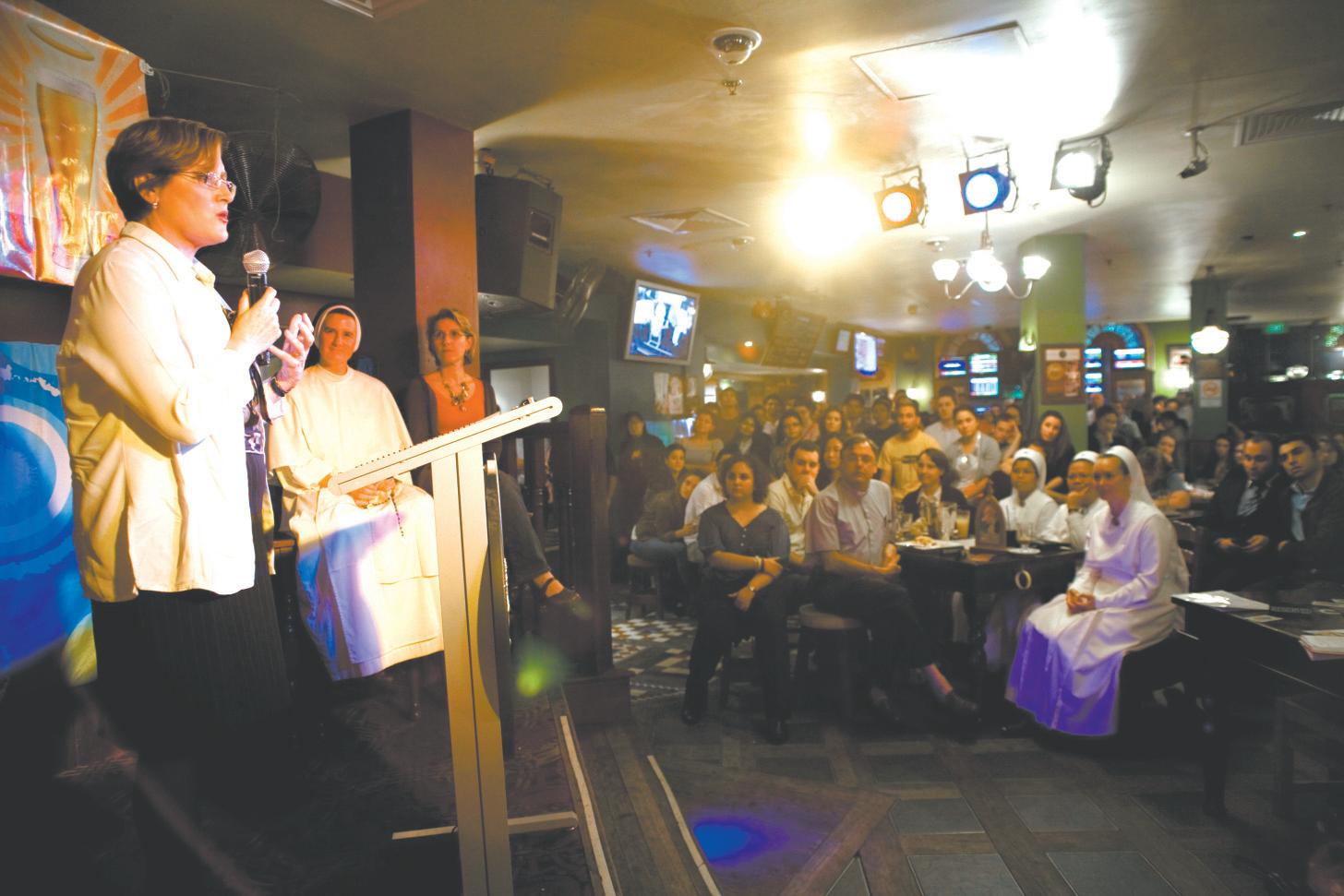
fairy tales as being rescued, being protected and going on dangerous adventures and trying to find a happy ending, she said. They are depicted in fairy tales as wanting “true love” - someone who treats them with respect and dignity.
After the 45-minute panel ses-
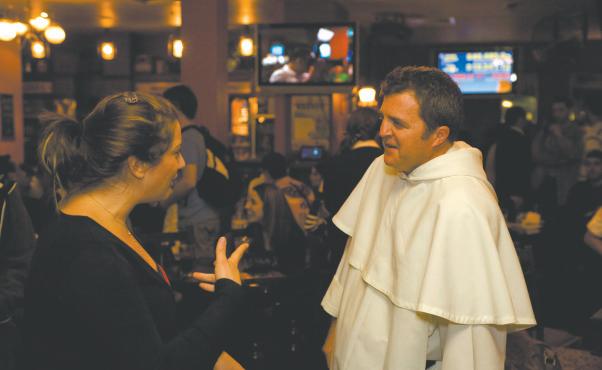


sion, the questions that followed kept Theology on Tap going for well over another hour and a half.
Anna Krohn described the engaging setting as a “mini-World Youth Day,” perhaps in part due to the high number of Franciscans and Dominicans and other reli-
gious so obviously visible in the audience - not to mention the presence of Bishop Anthony Fisher OP - at his first Theology on Tap in his new appointment as Bishop of Parramatta. Mrs Krohn said there was a “lively crowd” that evening, where

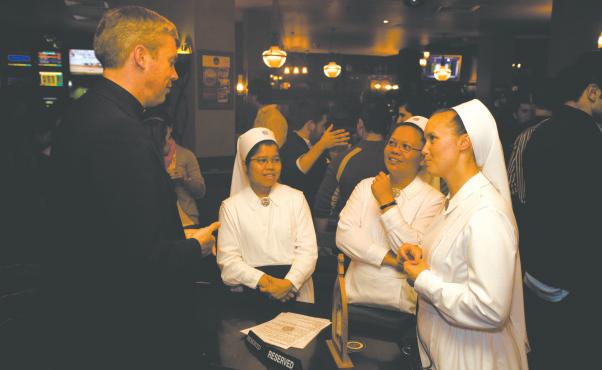
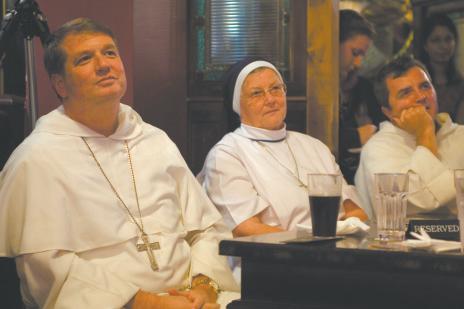
the Q and A was conversational, with an “openness” that she hadn’t experienced in a public setting such as this before.
The questions tended to be very “practical” from how to handle workplace situations where men are dealing with “smutty stuff” or
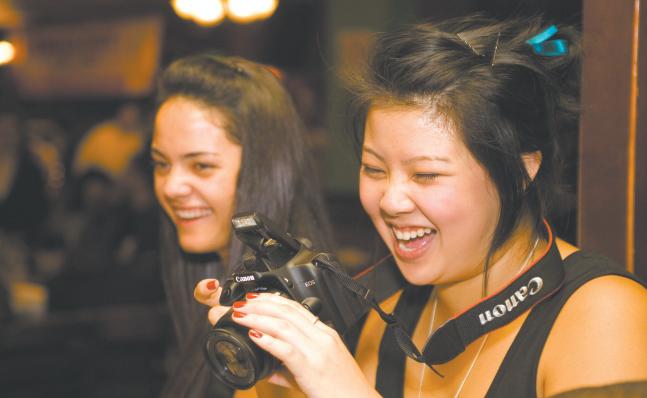

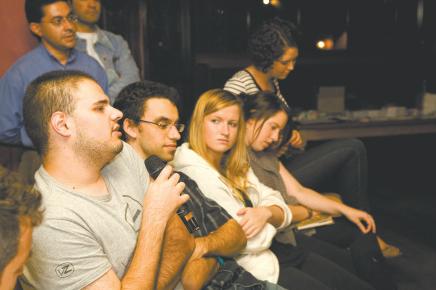

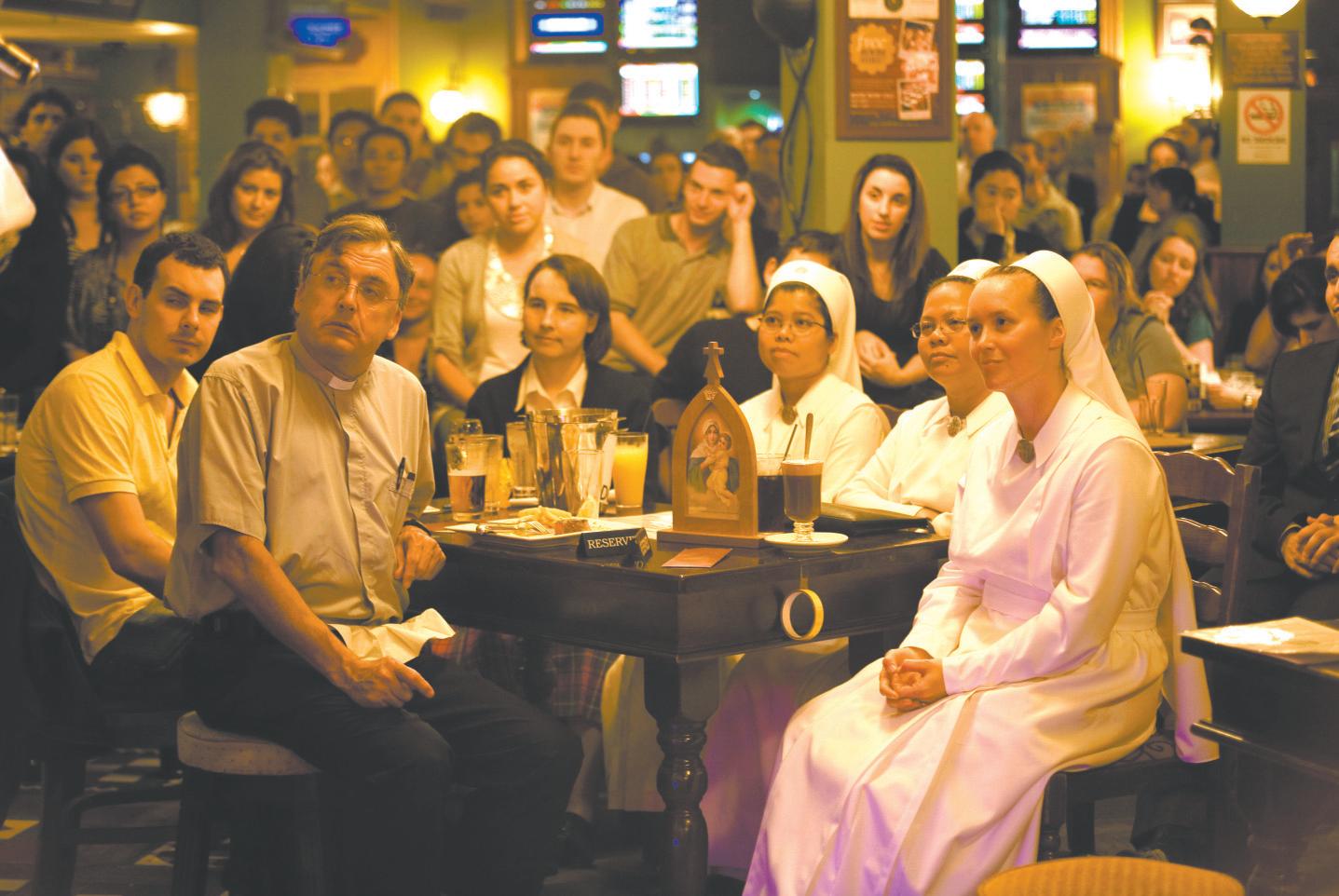
are rough, to how old should you be when you get married, she said.
Mrs Krohn brought the audience alive and made the evening quite personal by asking where they hailed from.
Many had come from Campion College, Notre Dame (Sydney cam-
pus) as well as bus of young people from Wollongong. The take-home wisdom she provided was encouragement for the men to be noble.
“The men wanted to know what they should do, and I said “One way to measure what you do is ask yourself ‘Is this ennobling? Is

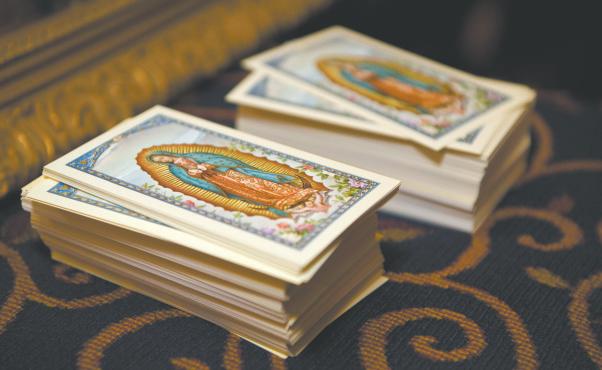



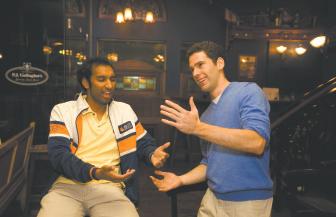
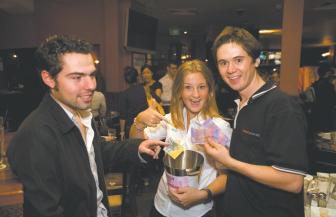
it making me kinder, more creative, braver, more patient, more sensitive?
This seemed to hit home, as she said the boys went “Oh yeah, right”.

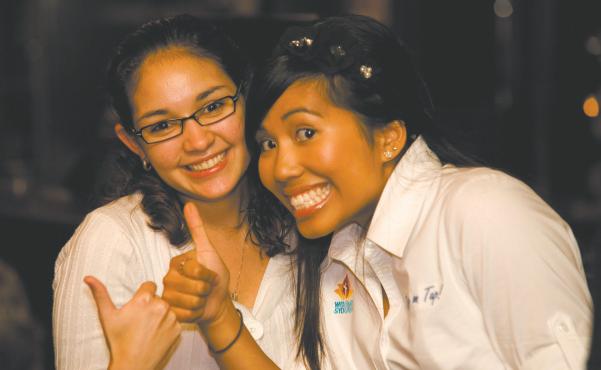


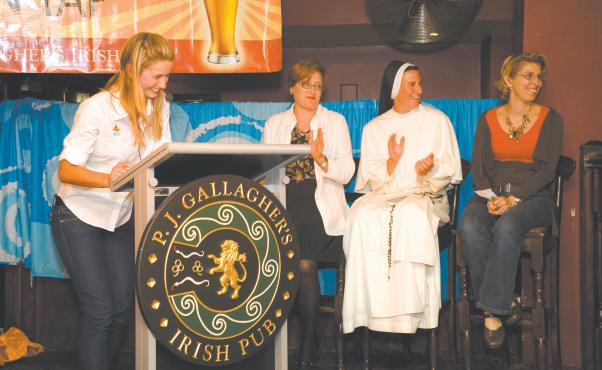
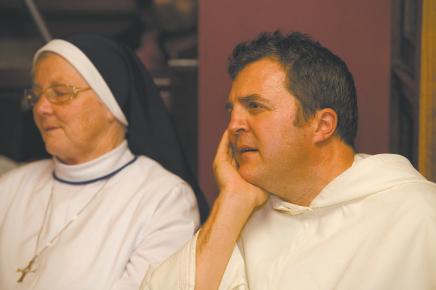

The week before Mother’s Day, Innaloo/Karrinyup Parish Priest FR NICHOLAS PERERA’S mother died in Sri Lanka. He reflects for The Record on her deep spiritual life.
This year, during the season of Easter every now and then we came across in our daily Gospel readings Chapter 14 of John’s Gospel. It started on 30 April, the Friday of the 4th week of Easter, continued on a few days in the fifth week of Easter, on the sixth Sunday of Easter and also on the feast of Pentecost, the Birthday of the Church instituted by our Lord.
Obviously this chapter is of much importance to Our Lord, to His disciples, and to all of us. In this chapter, Our Lord says that He was going to prepare a place for us in His Father’s house where there are many rooms. We have His “I am” statement which He states with a lot of authority that He is the Way, the Truth and the Life. We have His assurance repeating in verses 13 and 14, “If you ask for anything in my name, I will do it”. We have another “if” statement repeated in the verses 15 and 23, “If you love me, you will keep my commandments, you will keep my word”. We have also the promise of His precious Gift, the Holy Spirit in verses 16, 17 and 26.
This Chapter 14 was my mum’s favourite. She recited by memory or read a few verses from it up to four times a day. I believe it is beyond doubt that she was a belov-
ed disciple who loved our Lord much and kept His word, daily.
My mother lived a saintly life.
She daily got up at 4am to read the Scriptures. She read different Scripture passages; meditated, and made some of those Scripture verses her own and put that Word of God into practice in her life.

Mary Quinta, who passed away in Sri Lanka recently. She was the mother of Fr Nicholas Perera, the parish priest of Innaloo/Karrinyup.
About 5 o’clock, my father joined her to read and meditate the daily readings and the Gospel before they attend morning Mass. She was receptive to God’s word in many other ways too; attending Lenten retreats and Marian retreats, Bible Seminars and Seminars for mothers, Charismatic rallies and numerous prayer gatherings. Unless she was very sick, she didn’t miss Sunday Mass. She was a very loving and a responsible Catholic mother who accomplished her motherly duties to all her five children especially greatly supporting them in their Spiritual life.
She was a faithful and good Catholic wife to my dad, looked after him so well and led a respectable family life for 53 years with him in 80 fruitful years.
My mother died a Saintly death
This is how God was gracious to my mum and rewarded her with a peaceful and happy death. It was the first day and the first Saturday of the month of May, a month dedicated to Our Blessed Virgin Mother. As usual, she got up early, finished all her Scripture reading, meditating and praying God’s word, then got ready to go for Mass.
In my home parish in Sri Lanka, if the weather permits, every first Saturday they celebrate an outdoor
Mass at the altar of the huge Our Lady of Lourdes grotto. Mum, whose name is Mary Quinta, had a great devotion to the Blessed Virgin Mary. She attended the Mass at the Grotto in honour of the Blessed Virgin Mary, and I’m sure that she prayed to Mary asking her powerful intercession and protection for me her priest-son living here in Australia, and for her four other children and their families, living in London, Dubai and Sri Lanka.
She received Holy Communion and after Mass she chatted to the parish priest and his assistant. That’s how she began the last day of her life.
Returning home after Mass she had breakfast, did some household work and responded positively to a request to prepare a student for an English exam.
I’m sure she did a lot of talking during that teaching session about an hour, and she was very healthy that morning. My mum was glad that she was able to help that student. She taught English for more than 40 years in government schools in Sri Lanka before her retirement.
It was God’s time for my mum to go I was able to talk to my mum over the phone the day before she died. She told me she’d had a good check up and the doctor had said she was having great health.
My sister in Dubai, her husband and her daughter had taken turns in talking to mum and dad for a long while just half an hour before she died.
After that conversation, my brother-in-law had gone shopping and received a text message saying
our mother had died. Immediately he started his way back home to give the message to my sister. When reaching home he saw my sister was praying though it was not her usual time of prayer, and he even wondered whether she came to know about her mother’s death. She hadn’t. As she saw him she asked “Why did you come back?” He replied, “You finish your prayers first.” “I have just finished, what’s the matter?” she asked. “If you don’t get disturbed I have some sad news.” “I’ll be alright because I’ve just finished praying”, she told him.
She was shocked to hear the sudden loss of her dear mother to whom she spoke just half an hour ago. Something amazing also happened to teach us that this one incident was connected to the other and that the Finger of God was present throughout the whole incident.
She told her husband: “During my prayer I experienced a strange chest pain I had never experienced before. My whole body was aching and I thought I was going to die”at exact time of our mother’s death in Sri Lanka.
She was not the only one praying at that time. Near my mum’s death bed in Sri Lanka, my dad and the younger sister were also praying. Just before she died, my mother told my younger sister and dad: “I just want to lie down a bit, I have a slight pain in my chest.” After a short time of silence she said: “I’m going to die”.
Then came the last words out of her mouth - two complete Scripture verses from John 14, her favourite Gospel chapter, by which Jesus was explaining about the precious gift that He was going to bestow upon His disciples who keep His word.
My dad then knew that she was dying and offered her soul to Jesus, saying: “Jesus, please take care of her.” The next moment she
breathed her last. What a peaceful and happy death it was. Coming to know the way she died, one Bishop who came to our home to pay his last respects to mum said: “The transition from life to death is a moment of great human struggle. If she recited a Scripture verse that time, it was a good indication to know that she died a saintly death. It is a very rare occasion. Even in the lives of the declared saints of our Catholic Church, only a very few saints had recited a Scripture verse when dying. The final words of that bishop to my sister were, “Your mum went straight to heaven.”
Special privileges my mum enjoyed on the day of her funeral
Being the mother of a priest, she had the privilege of having her funeral Mass celebrated by me, her own priest-son, while dozens of other priests concelebrated as well.
Twenty-two priests on a retreat who could not be present for her funeral Mass, celebrated a memorial Mass for the repose of her soul almost at the same time her funeral Mass was celebrated, at the chapel of that retreat centre in Sri Lanka.
Mother’s Day 2010
The sudden loss of my mother the week before Mother’s Day made it difficult when the time came for me to deliver my Mother’s Day homily.
But God gave me strength necessary to give a powerful Mother’s Day message and the courage also to include a few above-mentioned words about my mum to my parishioners here.
I was sad that I could not make a phone call to Sri Lanka to greet my mum on the Mother’s Day, but I felt that my mum was watching over me and living closer to me than when she was still living. At the same time I found much comfort on the Mother’s Day this year that I now have a mother of my own in heaven.
couple candidly share about their marriage and call to Celebrate Love
Continued from Page 1 to our family they asked “Have you got problems in your marriage? Is everything all right?” They also said “If everything is OK, then why are you going?” We reassured them that all was fine, but that we just wanted some “time out” to understand a little more about our marriage.
We expected there would be some general discussion about communication skills and techniques and maybe some about love and God. All the usual stuff. We were also concerned that we might have to “share” details about our marriage with other couples or a group. Time was an issue too. How could we “reallocate” a whole weekend out of our busy lives to attend anyway?
There was also some level or organisation with our kids - not insurmountable - but an issue nonetheless. It was going to cost a bit too; and what real benefit would it provide anyway? After thinking about it, and how much we really valued our marriage, we
went. After all, it is only two days out of the 9,307 days we had already been married, and who’s counting?
So in early 2006 we attended the first session of the Celebrate Love seminar. From the warm personal welcome to the opening remarks by the presenters we knew this was going to be far from a boring, typical and “low budget hand-outs” Church seminar.
The presenters were enthusiastic married couples who shared their real life experiences of marriage threaded within some excellent material and content. The richness of the content and the quality of the couple work-books was far beyond expectation. A contemporary presentation of marriage highlighting the realities of marriage, set in the context of the richness of marriage. Each topic was structured with initial content and context provided by the presenters, then immediately followed by discussion we had, just as a couple, no-one else. It seemed like the programme had been written and
designed just for us, Stephen and Carmen. Why? It seemed that every topic, in varying depth were topics we needed to cover and discuss. But, interestingly, every couple seemed to have a similar experience.
So, maybe the programme wasn’t just written for us personally after all. Our marriage, which was pretty good before, is even better now. We loved the programme so much, we were a host couple for a seminar run in our own parish of Applecross. We were then encouraged to become part of the Celebrate Love presenting and organising team. The programme has richly opened up the work done by Pope John Paul II in his writings on the Theology of the Body. For us, it has placed marriage in a much greater context than we had ever imagined, and certainly much more than when we were first married. When we fell in love, courted, engaged and were married, we thought it was great and that it couldn’t really get any better than that. It was our

experience of family and friends that not all marriages work and some “function” but not all that well. So we always felt that we were on the “OK” side of the chart. And we were! But after doing that Celebrate Love seminar and applying its wonderful information in our marriage, things are even better than when we set out on our marriage journey. We have every confidence in saying that marriage is magnificent. Our marriage is also a witness to our children. Our children also see more than a glimpse of God in our marriage too. Our family and friends see this too. It doesn’t need to be expressed in words, because it is what people “see” in our marriage that makes them think that there is something special there, and something worth having in their own lives. The Celebrate Love seminar has also taught us that marriage is not something to “put under a tub” for our personal objectives, but instead is something to celebrate. As humans, we are born to be in relationship. Those called to the vocation of marriage are on a mission to love - reflecting God’s love through the love of husband and wife. There is so much more we can tell you about the Celebrate Love seminar. There is plenty of information on the website www.celebratelove.com.au, which includes details of the topics and a chance to register for the next seminar on 19-20 June in Doubleview. We would also love to talk to you more about the programme and would welcome your phone call. Please phone either Carmen or Stephen on 9316 4434 or 0419 945 277. We are also planning a wine and cheese info evening at our home on 4 June. **Stephen and Carmen Court have been married for 29 years with 5 children, have been involved with Celebrate Love for 3 years and are mentor couples for the Embrace programme run over 6 weeks, preparing engaged couples for marriage using a tailored version of the Celebrate Love seminar programme especially focused on engagement and preparation for marriage.
Celebrating the 93rd anniversary of the apparitions of Our Lady at the Cova da Iria in Fatima, Portugal


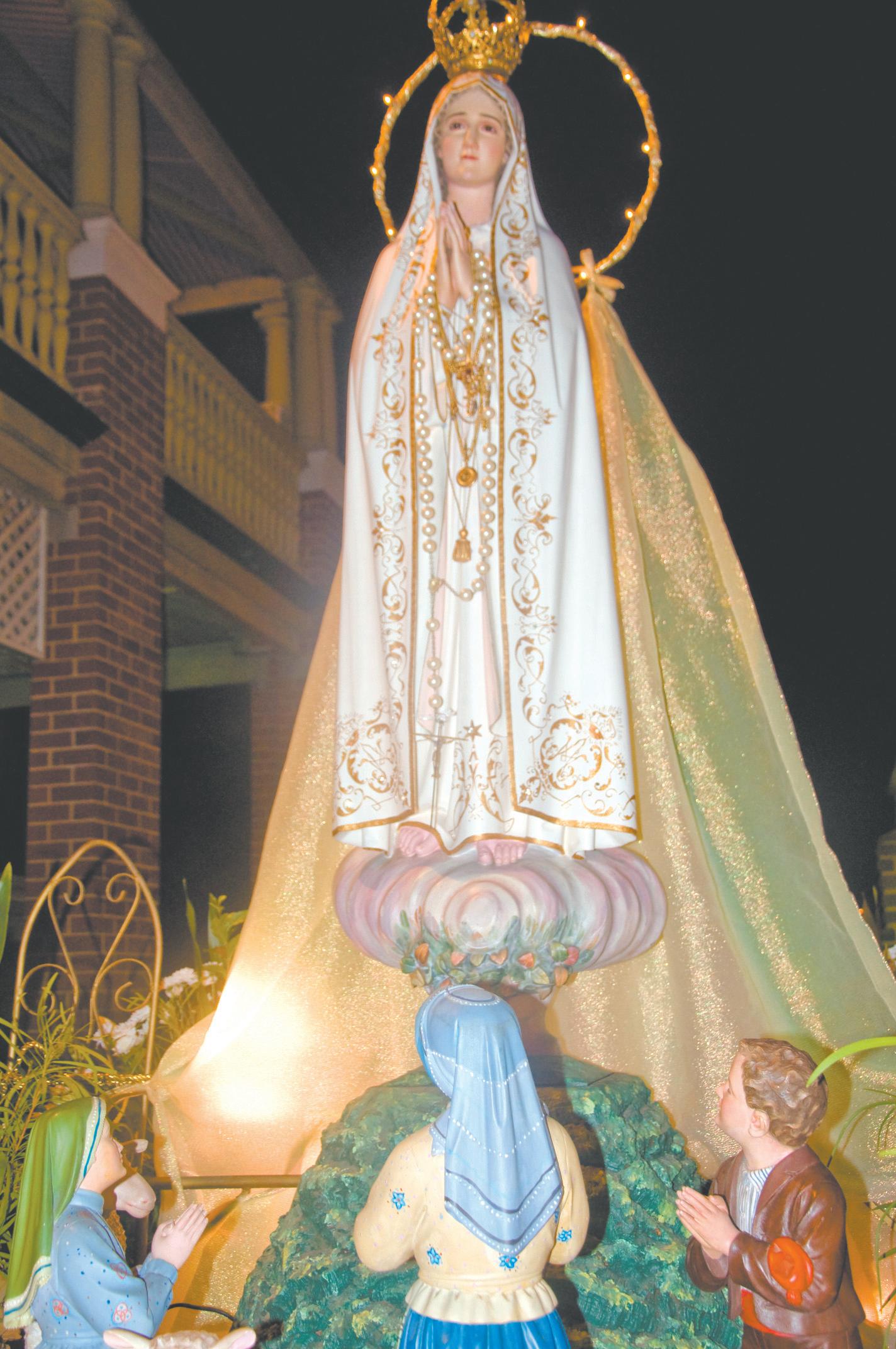

THE statue of Our Lady of Fatima used by the Portuguese Catholic community was made in the town of Veio de barco in Braga, Portugal.
It arrived on the 23 October 1974 and was first presented to the city the next day at the Blessing of the Fleet where it was blessed by the Archbishop of Western Australia.
Since then it has remained at St Patrick’s Basilia in Fremantle where every year since its arrival it has been processed around the city on 13 May on the Feast of Our Lady of Fatima.
The statue shows Our Lady in one of her apparitions to the three peasant children, Lucia de Jesus (centre), Francisco Marto (left) and Jacinta Marto (right, not seen), shown in the photo below.


The
When: 13 May 2010
Who: Portuguese Community for the Catholics of Perth.

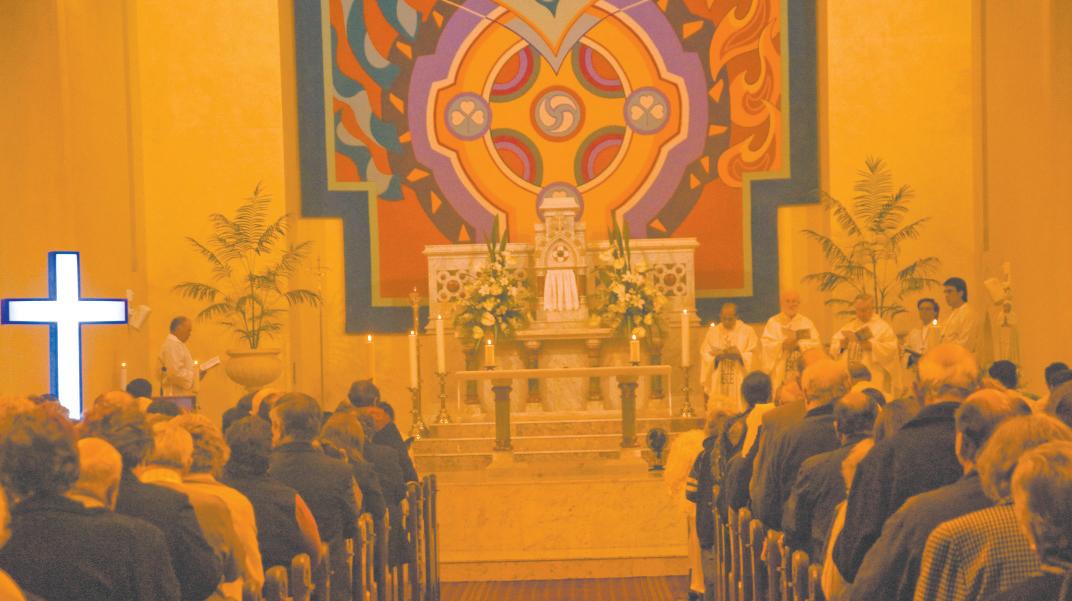
The 41st year of the celebration in Western Australia of Our Lady’s apparitions in Portugal
St Patrick’s Basilica, Fremantle, 13 May
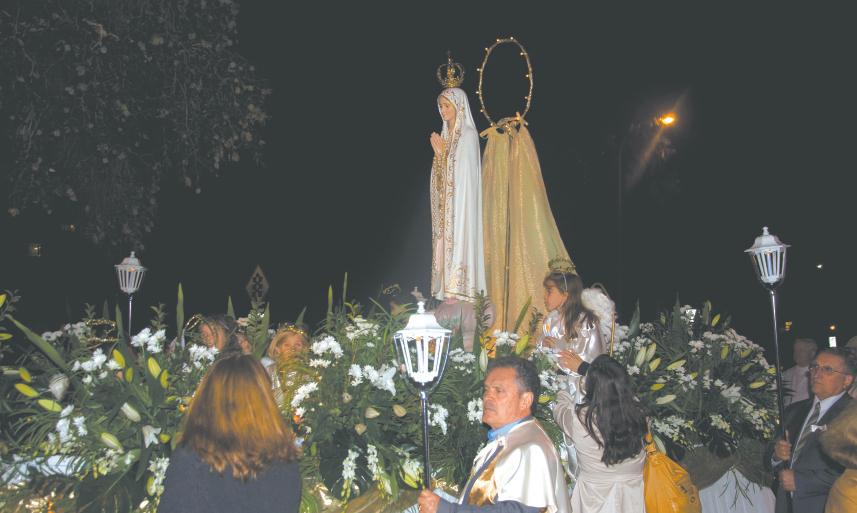

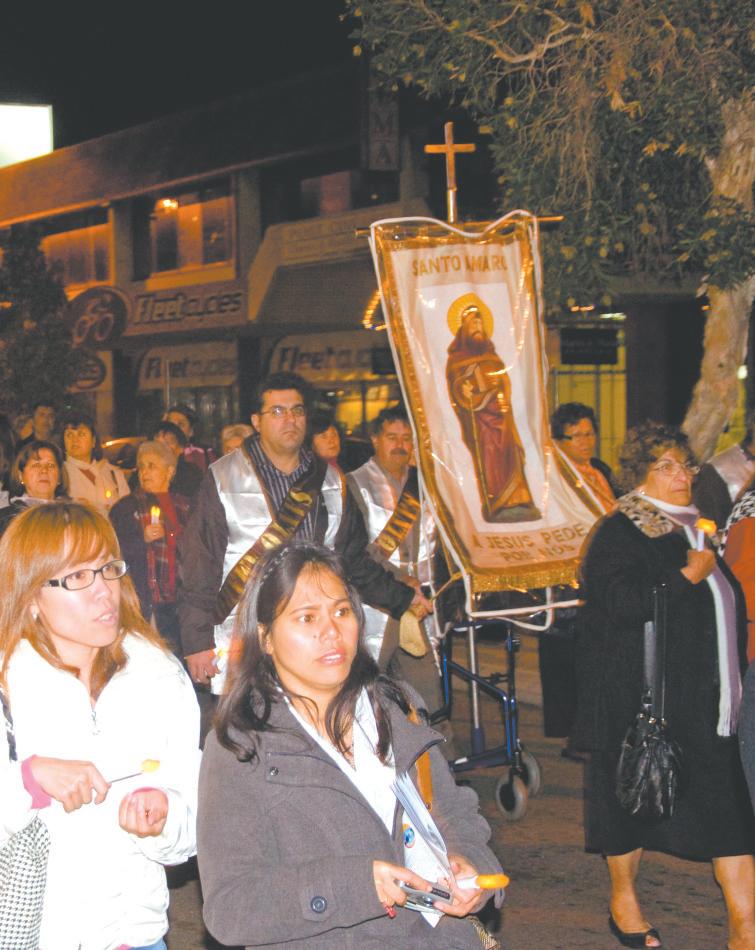

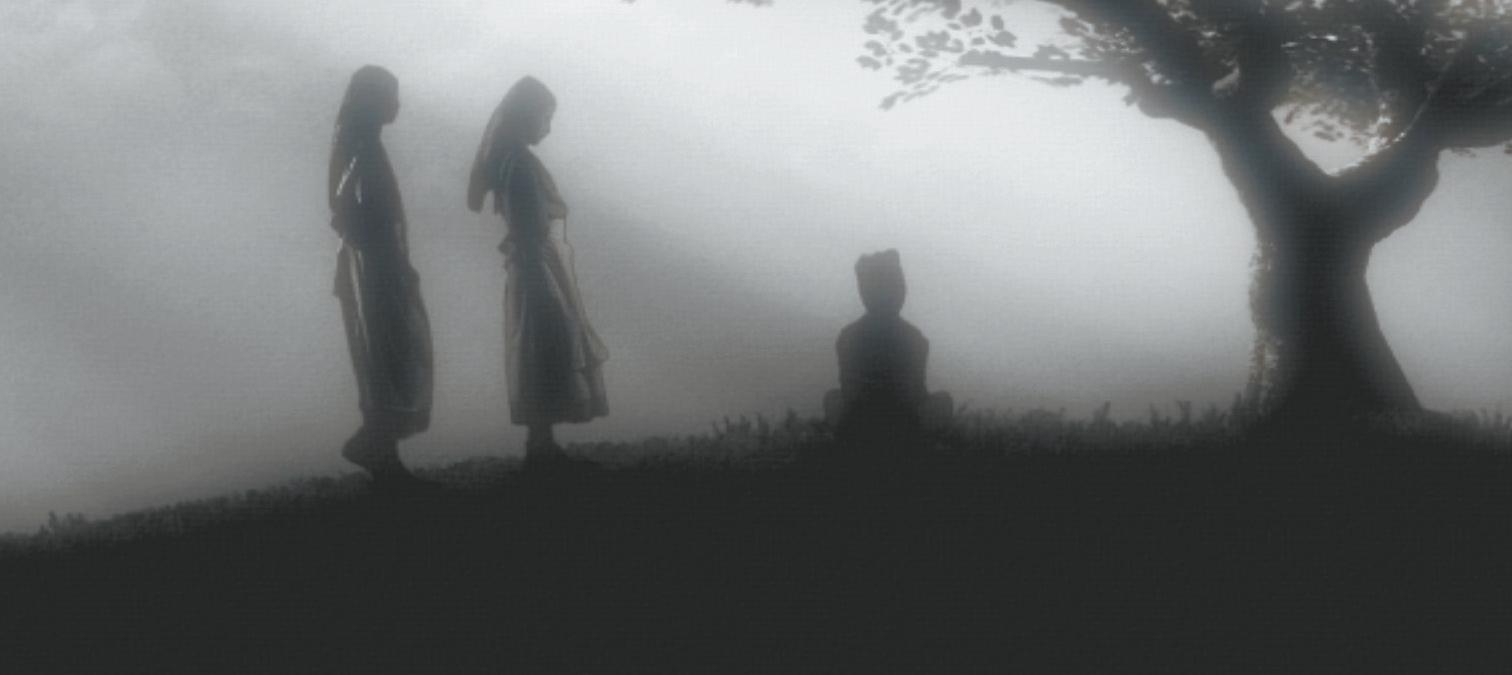
The story begins in the village of Fatima, Portugal, on 13 May 1917. On that fateful day near that tiny village, The Blessed Virgin Mary, Mother of God, appeared to three young peasant children: Francisco, Jacinta, and Lucia; ages 10, 9 and 7. As was the custom, these youngsters were tending their family’s sheep when “a Lady all in white, more brilliant than the sun… indescribably beautiful,” standing above a bush, appeared to the youngsters. From May through October 1917, the Lady appeared and spoke to the children on the 13th day of each month.
News of these apparitions began to spread throughout the region. The children recounted that the Virgin told them that God had sent her with a message for every man, woman, and child living in the century. She promised that God would grant peace to the entire world if Her requests for prayer, reparation and consecration were heard and obeyed. While many people believed the children had actually seen the Virgin, many others discounted the children’s story, subjecting them to much derision and ridicule. When it became known the Lady would visit the children for the last time on 13 October 1917, and had promised a sign that would convince the world she had appeared, many pilgrims made plans to attend. Though the region had been


Shot on location in Portugal and in the UK, 13th Day Films worked with a cast of over 250 to re-create the scenes of the 70,000 strong crowds and three Portuguese children play the iconic roles of the Seers at Fatima. Based on the memoirs of the oldest Seer, Lucia Santos, and many thousands of independent eye-witness accounts, The 13th Day dramatises the true story of three young shepherds who experienced six interactive apparitions with a “Lady from Heaven” between May and October 1917, which culminated in the final prophesised Miracle.
subjected to three days of torrential downpour, nearly 70,000 people journeyed through the heavy rain and mud to the place of the previous apparitions to witness the predicted miracle. Many were scornful, unbelievers whose sole intent was to discredit the children’s stories. Suddenly the “clouds separated … and the sun appeared between them in the clear blue, like a disk of white fire.” The
people could look at the sun without blinking and while they gazed upward, the huge ball began to “dance” . The huge fireball whirled rapidly with dizzy and sickening speed, flinging out all sorts of brilliant colors that reflected on the faces of the crowds. The fiery ball continued to gyrate in this manner three times, then seemed to tremble and shudder, and plunge in a mighty zigzag course toward
the earth. The crowd was terrified, fearing this was the end of the world. However, the sun reversed course and, retracing its zig-zagging course, returned to its normal place in the heavens. All of this transpired in approximately 10 minutes. After realising they were not doomed, the crowd began ecstatically laughing, crying, shouting and weeping. Many discovered their previously drenched clothing
to be perfectly dr y. After this
“miracle,” the children were grilled many, many times, about what they had seen and been told. Their story never changed. The heart of Our Lady’s message to the world is contained in what has become known as the “Secret,” which she confided to the children in July 1917.
The “Secret” actually consists of three parts. The first part of the “Secret” was a frightening vision of hell, “where the souls of poor sinners go,” and contained an urgent plea from Our Lady for acts of prayer and sacrifice to save souls, with particular emphasis on praying of the rosary and devotion to the Immaculate Heart of Mary.
The second part of the “Secret” specifically prophesied the outbreak of World War II and contained the prediction of the immense damage that Russia would do to humanity by abandoning the Christian faith and embracing Communists’ totalitarianism. The third part was not revealed until 2000. Its revelation coincided with the beatification of Francisco and Jacinta. It did not contain any striking or cataclysmic prediction, but, instead, the vision supported and affirmed the immense suffering endured by witnesses of the faith in the last century of the second millennium.
Sister Lucia, the surviving member of the Fatima trio, confirmed that in the vision “the Bishop clothed in white,” who prays for all the faithful, is the Pope.

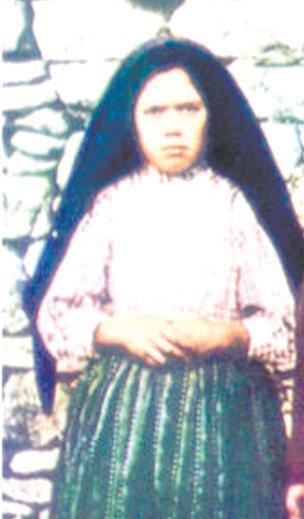
Lucia, born on March 22, 1907 in Aljustrel, a village in the parish of Fatima, Portugal was the youngest of a popular family. By 8 years of age, she, was occupied with the tending of the family’s sheep, as her brother and sisters had before her. She was at times a very secretive girl.
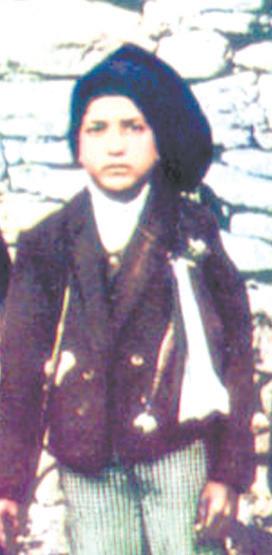
Francisco Marto
Francisco was born on 11th June 1908, the sixth of seven children, in a house in the same small village as his cousin Lucia, Aljustrel. Francisco was a kind and gentle boy, who loved games and other children. He was a peacemaker, but courageous, as revealed by his conduct under questioning by ruthless Police.

Jacinta Marto
Two years younger than her brother Francisco, Jacinta born on 11th March 1910, charmed all who knew her. She was pretty and energetic, and loved to dance. Sometimes wilful, she would pout when she did not get her way. She had a marked love for Our Lord..
Fatima: The secret’s out, despite claims to the contraryBy Cindy Wooden Catholic News Service
VATICAN CITY - Despite claims there are still secrets connected to the apparition of Our Lady of Fatima, Pope Benedict XVI and his Secretary of State said the entire message has been published and has been interpreted accurately.
The Marian apparitions to three children in Fatima, Portugal, began 90 years ago on 13 May and Pope John Paul II ordered the so-called “third secret” of Fatima to be published in 2000.
As the Fatima anniversary approached, the Vatican bookstore was selling copies of “The Last Fatima Visionary: My Meetings With Sister Lucia.” The 140-page, Italian-language interview with Cardinal Tarcisio Bertone, Vatican secretary of state, opens with a letter of presentation from Pope Benedict. The two men worked with Pope John Paul to publish the “third secret” and to write an official commentary on it, describing its depiction of a “man dressed in white” shot down amid the rub-
ble of a ruined city as a prophetic vision of the 1981 attempt to assassinate Pope John Paul. In the new book, Cardinal Bertone said Carmelite Sister Lucia dos Santos, at the time the last surviving visionary, confirmed the Vatican’s interpretation.
He also said Pope John Paul felt that since the assassination attempt had already taken place and he survived, the 2000 beatification of Sister Lucia’s cousins, Francisco and Jacinta Marto, was an appropriate occasion for announcing the publication of the secret.
The continuing rumors that the Vatican is still hiding something puzzle Cardinal Bertone and, he said, they irritated Sister Lucia, who died in February 2005 at the age of 97.
In the book, Cardinal Bertone said, “The most diehard ‘Fatimists,’ like those who follow Father Nicholas Gruner’s Fatima Crusader magazine, remain disappointed.”
Fr Gruner, a priest based in Canada, repeatedly has said that the Vatican’s text does not match other accounts by Sister Lucia
and, basically, does not contain anything worrying enough to have prevented Popes John XXIII, Paul VI and John Paul II from publishing it earlier.
The strange thing, Cardinal Bertone said in the new book, is that Pope John Paul decided to publish the secret precisely to put an end to the wild speculation that had surrounded it.
“The pressure from the ‘Fatimists’ was extremely strong,” the Cardinal said.
“The most absurd theses” were being spread, mainly presuming that the secret predicted catastrophic world events or widespread heresy at the top levels of the Church, Cardinal Bertone said. “Clearing up the question was a pastoral concern,” he said.
Pope Benedict’s letter, written in late February, reflects that concern. The publication of the third secret “was a time of light, not only because the message could be known by all, but also because it unveiled the truth amid the confused framework of apocalyptic interpretations and speculation circulating in
the Church, upsetting the faithful rather than asking them for prayers and repentance,” Pope Benedict wrote.
The Pope, as Prefect of the Congregation for the Doctrine of the Faith, said he wrote the Vatican commentary “after having prayed intensely and meditated deeply on the authentic words of the third part of the secret of Fatima, contained on sheets written by Sister Lucia.”
Pope Benedict said that for him the secret can be summarised “by the consoling promise of the Most Holy Virgin: ‘My immaculate heart will triumph.’”
Cardinal Bertone’s knowledge of the Fatima secret is not something that comes just from a book.
As secretary of the Congregation for the Doctrine of the Faith, he was sent by Pope John Paul to Fatima to discuss the upcoming publication of the secret with Sister Lucia.
What was known as the “third secret” was, in fact, the third part of a vision shown to Sister Lucia and her cousins.
Sister Lucia had made the first two parts public in the late
1930s. They included a vision of hell shown to the children, along with prophecies concerning the outbreak of World War II, the rise of Communism and the ultimate triumph of the Immaculate Heart of Mary, especially in Russia if the country was consecrated to her Immaculate Heart. Sister Lucia wrote down the third part of the message, sealed it in an envelope and gave it to her local Bishop.
The message was sent to the Vatican in 1957, where successive Popes read it, but decided not to reveal its contents.
As for objections that the secret could not refer to Pope John Paul since he did not die, Cardinal Bertone said such objections show an ignorance of the spiritual purpose of prophecy.
“Prophecy is not guided by a deterministic fatalism,” he said.
“Prayer and penance are stronger than evil and than bullets.”
While prophecy warns of what could happen if people do not pray and repent, he said, it also demonstrates the fact that “conversion, penance and prayer can change the course of history.”

PORTO, Portugal - On a four-day visit to Portugal, Pope Benedict XVI turned the Church’s attention to Fatima and offered a new perspective on the continuing relevance of Mary’s appearances and messages there.
But the larger purpose of his 11-14 May trip, a point enunciated at each of his three stops, was to prod Catholics to adopt a more forceful and direct way of evangelising in a largely secularised society.
In talk after talk, the Pope spoke about how to be a missionary in the modern world, challenging Portugal’s Catholic majority - and its Bishops - to stop acquiescing in a kind of silent surrender as the faith is marginalised and even ridiculed.
In the northern city of Porto on 14 May, in the final big event of the trip, the Pope told 200,000 people at a Mass that their duty as followers of Christ was to announce his Gospel in every sector of society.
“We need to overcome the temptation to limit ourselves to what we already have, or think we have, that is safely our own: that would be a slow death for the Church as a presence in the world,” he said.
Pope Benedict has sometimes been presumed to accept the idea of a smaller but more militant Church, supposedly to strengthen the Church’s identity. But he made it clear in Portugal that “pruning back” is not his strategic goal.
In Porto, the Pope said that to reach out more effectively, the Church’s traditional idea of evangelising must change. In today’s increasingly multicultural societies, he said, the Church needs to be able to mix dialogue with proclamation and witness of the Faith. He said the Church’s missionary map is no longer geographical, however. Those awaiting the Gospel message are “not only non-
Some in Church give ‘helping hand’ to secularism in Portugal, Pope says
BY JOHN T HAVIS Catholic News Service
Christian populations and distant lands,” but entire social and cultural areas that cut across national or continental boundaries.
His words seemed to prepare the way for an announcement, expected in coming weeks, of the creation of a “Pontifical Council for New Evangelisation” aimed precisely at promoting broader missionary outreach in traditionally Christian countries.
The Pope made it clear from the moment he stepped off his airplane that his idea of “new evangelisation” did not mean trying to reinstall Catholicism as the state religion. Arriving in Lisbon on 11 May, he told civil authorities that the Church was happy to live in a pluralistic society, which challenges its members to articulate their beliefs and put them into practice.
Addressing an overflow crowd at Mass in one of Lisbon’s main squares, he encouraged Catholics to be “radiant witnesses” of their faith in key social areas: the family,
culture, the economy and politics. In case they took that as a theoretical exhortation, he then offered an “Evangelisation 101” lesson, focusing on enthusiasm and love for Christ. “Bear witness to all of the joy that His strong yet gentle presence evokes, starting with your contemporaries. Tell them that it is beautiful to be a friend of Jesus and that it is well worth following Him,” he said.
In Fatima, the Pope’s attention focused on Mary and the devotional movement that has developed around the sanctuary there.
He connected Mary’s apparitions with the evangelising task and, in an evening prayer service with priests and Religious, said Mary remains the model Christian for the modern Church.
Leading a nighttime Rosary recital on 12 May for tens of thousands of pilgrims, he said the Faith in many places seems like a light in danger of being “snuffed out forever.”
The Church’s absolute priority today, he said, is “to make God visible in the world and to open for humanity a way to God.” Don’t be ashamed, he told Portuguese Catholics, to show the signs of your faith. In a talk the next day to Catholics who work in social programmes, the Pope took aim at two issues that have illustrated the waning influence of the Church in Portuguese society: the liberalisation of legal abortion in 2007 and the imminent approval of a gay marriage law. He called both developments “insidious and dangerous threats to the common good,” prompting a huge wave of applause.
But the Pope also challenged his listeners, saying it was important for the Church’s social programmes to resist the materialistic and relativistic values of the dominant culture, which, if adopted, would drain faith and Christian hope from the their efforts. In effect, he asked that Church-run
FATIMA, Portugal - In a strongly worded talk to Portuguese Bishops, Pope Benedict XVI denounced what he called a “silence of the faith” in the face of widespread attacks on religious values.
Particularly in politics and in the mass media, some Christians have quietly consented as new barriers to the faith are constructed, he said on 13 May.
“Authentic witnesses to Jesus Christ are needed, above all in those human situations where the silence of the faith is most widely and deeply felt: among politicians, intellectuals, communications pro-

fessionals who profess and who promote a monocultural ideal, with disdain for the religious and contemplative dimension of life,”
he said. “In such circles are found some believers who are ashamed of their beliefs and who even give a helping hand to this type of
social programmes strengthen their Catholic identity.
Later on 23 May, the Pope addressed Portugal’s Bishops and, in unusually strong language, denounced what he called a “silence of the faith” in the face of widespread attacks on religious values. When politicians and the media have scorned religion, Catholics who are ashamed of their faith have given a “helping hand” to secularism by failing to speak up, he said.
The Bishops themselves, he said, must respect pluralism and engage in dialogue, but without being “gagged” when it comes to defending the Church’s moral teachings.
Clearly, the Pope sees evangelisation today as a countercultural activity. As he said in his first talk in Portugal, in modern societies it can even lead to the “radical choice” of martyrdom.
The other big dimension of the Pope’s visit was his interpretation of the message of Fatima. On the plane carrying him to Portugal, he surprised reporters by saying that the suffering of the Church prophesied by the Fatima visions could even include the priestly sex abuse scandal - an example, he said, of a “terrifying” attack on the Church from the sins of its own members.
The Pope paid homage to Mary at Fatima, praying before her statue and at the tombs of the three shepherd children to whom she appeared in 1917. Celebrating Mass for an estimated 500,000 people at the sanctuary on 13 May, the anniversary of the first apparition, the Pope emphasised that the prophetic mission of Fatima had not ended, and indeed has special relevance for a world still caught in a “cycle of death and terror.”
The Pope made it clear that he sees the messages and secrets of Fatima not as apocalyptic predictions, but as a continual call for conversion for a suffering Church and a suffering world.
This effort to “universalise” the message of Fatima fits in well with Pope Benedict’s theological approach to private revelations, but has left some Fatima enthusiasts wondering where the dire details went.
secularism,” he said. The Pope said the changes in contemporary society require a “new missionary vigour” by mature lay Christians, and Bishops themselves should show that they will not be “gagged” when it comes to announcing the Church’s moral teachings.
The Pope made his remarks at his final major event in Fatima, where earlier in the day he celebrated Mass for half a million people, then met with Catholic pastoral workers.
The Pope did not mention specific political issues in his address, but Portuguese Church leaders have been distressed at the liberalisation of abortion laws in 2007 and the recent legislative approval of a same-sex marriage bill.
Some commentators have criticised the Bishops of Portugal for failing to take a harder and more public line against those developments. The Pope said Bishops must redouble their efforts at a time when Catholicism is no long-
er seen as the common patrimony of Portuguese society. But he said that in convincing others, witness is more important than words.
“Simply proclaiming the message does not penetrate to the depths of people’s hearts, it does not touch their freedom, it does not change their lives. What attracts is, above all, the encounter with believing persons who, through their faith, draw others to the grace of Christ by bearing witness to Him,” he said.
The Pope asked the Bishops to give special attention to lay movements that have arisen in recent decades - an important development that occurred in “a moment of weariness in the Church,” he said. The Bishop’s role is to welcome these new expressions of vitality in the Church, while helping the movements to “find the right way, making some corrections with understanding” and showing “a certain openness and a willingness to learn,” he said.

At Fatima, Pope asks Mary to help keep priests holy
BY JOHN T HAVIS Catholic News ServiceFATIMA, Portugal - Pope Benedict XVI prayed at the site of Mary’s apparitions at Fatima and entrusted the world’s priests to her, saying the church needs “holy priests, transfigured by grace.”
The Pope prayed that Mary keep priests from the temptations of evil and “restore calm after the tempest.”
While he did not explicitly refer to the priestly sex abuse crisis, the Pope’s remarks May 12 in some ways echoed what he said on his flight to Portugal the previous day, when he called the scandal a “terrifying” example of sins committed by the church’s own ministers and urged a process of penance and purification in the church.
The German Pope arrived at Fatima to the cheers of more than 40,000 faithful, many of them sick or disabled, who had waited for hours at the sanctuary.
Some watched from stretchers as the Pope waved from a pavilion overlooking a vast plaza in front of the shrine, as cold rain showers alternated with sunshine.
The Pope then knelt in the Chapel of the Apparitions, built on the site where three shepherd children witnessed a series of apparitions beginning May 13, 1917.
In a prayer recited before a statue of Mary, he recalled that Pope John Paul II had placed in its crown a fragment of a gunman’s bullet that seriously wounded him on 13 May 1981.
He noted that the Polish Pope was convinced Mary had saved his life that day.
“It is a profound consolation to know that you are crowned not only with the silver and gold of our joys and hopes, but also with the ‘bullet’ of our anxieties and sufferings,” Pope Benedict said. He left a gold rose at the statue’s feet.
After celebrating evening prayer with priests, religious and semi-

narians, the Pope pronounced the “act of entrustment and consecration of priests to the immaculate heart of Mary.”
In the Year for Priests, he said, it was important to remind priests that Christ is their model of holiness.
“Help us, through your powerful intercession, never to fall short of this sublime vocation, nor to give way to our selfishness, to the allurements of the world and to the wiles of the Evil One,” he said.
“Let your presence cause new blooms to burst forth in the desert of our loneliness, let it cause the sun to shine on our darkness, let it restore calm after the tempest,” he said. “Come to our aid and deliver us from every danger that threatens us.”
The entrustment of the world’s priests to Mary was a late addition to the papal program in Fatima. It came as the Pope and other church officials have responded to disclosures of hundreds of past cases of sexual abuse of minors by priests in several European countries.
In his comments to reporters
aboard his plane May 11, the Pope described the scandal as a grave spiritual failing that highlights the need for penance and spiritual conversion inside the church. In a letter to Irish Catholics in March, the Pope said abusive priests had betrayed the trust of innocent young people and would answer to God for their sins.
At the evening prayer service in Fatima’s immense and modern Church of the Most Holy Trinity, the Pope spoke about the importance of the Year for Priests and his hope that the church’s ordained ministers would strengthen their commitment to their vocations, above all through prayer.
He told priests that their own spiritual lives were crucial to their effectiveness in proclaiming the radical challenge of the Gospel. “How much we need this witness today. Many of our brothers and sisters live as if there were nothing beyond this life and without concern for their eternal salvation,” he said.
The Pope encouraged priests to look out for one another’s spiritual
health and intervene when necessary. “Be especially attentive to those situations where there is a certain weakening of priestly ideals or dedication to activities not fully consonant with what is proper for a minister of Jesus Christ. Then is the time to take a firm stand, with an attitude of warm fraternal love, as brother assisting his brother to remain on his feet,” he said.
The Pope also urged priests to help the church discern new vocations. As with many European countries, Portugal has seen a gradual but consistent drop in the number of seminarians; today there are about 290 seminarians in the country, down nearly 60 percent from 35 years ago.
The vocations rate in Portugal, where nearly 90 percent of the population professes Catholicism, is today among the lowest in Europe. Church officials said increasing participation by young people in Catholic lay movements was a hopeful sign for the future, and they were also hoping the Pope’s visit would stir new interest in vocations.
LISBON, Portugal (CNS) - In a meeting with Portugal’s artistic and academic elite, Pope Benedict XVI warned that modern society’s exaltation of the present threatens to undermine the traditionally Christian culture of Portugal.
The Pope said the Church’s role includes the defense of such cultural foundations.
“For a society formed by a Catholic majority and whose culture has been deeply marked by Christianity, the attempt to find the truth outside of Jesus Christ is a dramatic development,” he said.
The Pope made the remarks at an encounter in Lisbon on 12 May with more than 1,000 representatives of Portuguese culture, including artists, filmmakers, critics, musicians, writers and academics. He was on a four-day trip to the country, which was to include stops in Fatima and Porto. Seated on a throne in the center of a
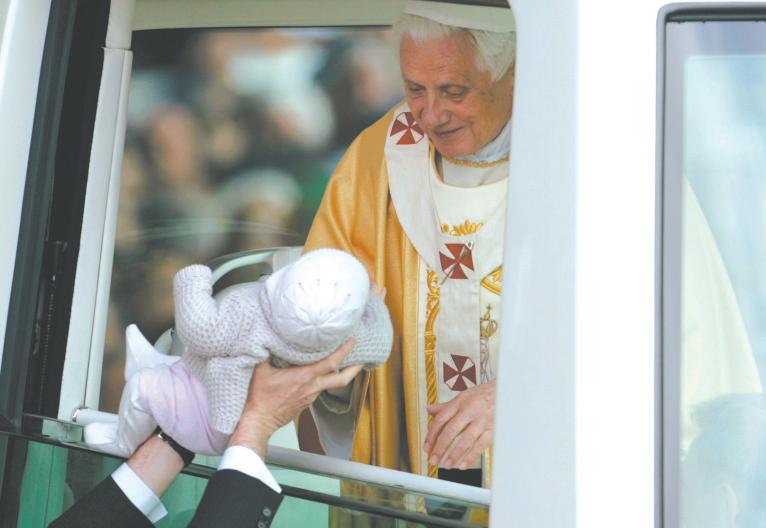
stage at the Belem Cultural Center, the Pope heard a brief musical performance and then listened as 101 year old Manoel de Oliveira, Portugal’s best-known film director, gave a welcoming talk. Oliveira spoke of the “terrible doubts and disbelief” that have been raised in the modern age
against the “faith of the Gospel that can move mountains.”
He concluded by saying that the roots of Portugal’s culture were Christian, “whether we want it or not.” The Pope said Oliveira’s words reflected a widespread anxiety caused by a modern culture that wants to “absolutise the
ABOARD THE PAPAL FLIGHT TO PORTUGAL (CNS) - Pope Benedict XVI said the priestly sex abuse scandal is a “terrifying” crisis that comes from inside the Church - not from an outside attack - and requires purification and penance to overcome.
The Pope made some of his strongest remarks to date on the sex abuse cases during an in-flight press conference on 11 May on his way to Portugal for a four-day visit that was to include the Marian shrine of Fatima.
Asked if the message of Fatima, which foresaw times of trials and suffering for the Church, could be applied to the sex abuse crisis, the Pope indicated that, in a general way, it could.
The vision of Fatima foresaw the need for the Church to undergo a “Passion,” which continues in various ways until the end of time, and which requires a response of continual conversion, he said.
“Among the new things that we can discover today in this message is that attacks on the Pope and the Church come not only from the outside, but the suffering of the Church comes from inside the Church, from sins that exist inside the Church,” he said.
“This, too, we have always known, but today we see it in a really terrifying way, that the biggest persecution of the Church doesn’t come from the enemies outside but is born from sin inside the Church.
present, detaching it from the cultural patrimony of the past.”
This has naturally created a conflict with Portugal’s strongly Christian history, he said.
This cultural conflict is actually a “crisis of truth,” the Pope said, because a culture that stops knowing the truth about itself and its own historical development ends up lacking clearly defined values and purposes. He said the Church, in defending the truth of the Gospel and its power to shape cultures, remains open to dialogue with others, as long as the dialogue is “without ambiguity and respectful of the participants.”
The Church’s primary mission in contemporary culture, the Pope said, is to “keep alive the search for truth and, consequently, for God,” and to lead people to seek the ultimate things that give life meaning.
He said the Second Vatican Council marked a turning point in the Church’s effort to have greater influence in the modern world.
The Council, he said, allowed the Church to welcome the best of modern culture while rejecting its “errors and blind alleys.”
“And so the church has a profound need to relearn penance, to accept purification, to learn on the one hand forgiveness but also the necessity of justice. And forgiveness does not substitute justice.
“We have to relearn these essentials: conversion, prayer, penance.”
The Pope, who helped explain the third secret of Fatima when it was published in 2000, said the Fatima messages extend in time to apply to the Church’s continuing journey, which is accompanied by suffering.
The Pope also spoke about the economic crisis that is shaking Portugal and the rest of Europe, saying it illustrates the need for a greater infusion of ethics and morality in the market.
“I would say this economic crisis has a moral dimension that no one can fail to see,” he said.
“The events of the last two or three years have demonstrated that the ethical dimension must enter into the world of economic activity.”
Pure economic pragmatism will always lead to problems, he said.
 BY JOHN T HAVIS Catholic News Service
BY JOHN T HAVIS Catholic News Service
PORTO, Portugal - At his last stop in Portugal, Pope Benedict XVI received the kind of welcome that has buoyed his spirits throughout the four-day visit.
Residents of the northern city of Porto - about 150,000 of them - turned out to cheer, wave, sing and pray on 14 May as the Pope arrived to celebrate Mass in a central city square.
The 83 year old Pope, who has looked a bit beleaguered at the Vatican recently, wore a broad smile as he waved to a multitude that stretched several city blocks. People crowded the balconies and windows of office buildings, which were decorated with three-story-tall flower garlands. Down at street level, the enthusiasm was palpable. Young people wore Pope T-shirts, families held homemade posters and everyone seemed to have flags that read: “Bem-vindo Papa Bento” (Welcome Pope Benedict). Many stood for hours in a light rain to attend the papal liturgy.
Secularism might have made inroads in Portuguese society, but that didn’t dampen the excitement and happiness at hosting the German Pope. In Lisbon and Porto, he was given the keys to the city and, more importantly, seemed to have the sympathy of his listeners.
“We love the Pope, who he is and what he represents,” said Elisabete Borges, a 30-year-old Catholic who stood behind a security barrier near the papal altar in Porto.
She said Pope Benedict appeals to people because of his intelligence and his willingness to confront the deeper issues in people’s lives. Portuguese Catholics, she said, are well aware that the Pope has had to deal with problems resulting from the sex abuse crisis.
“I think he’s helping to clarify the problem. He’s not covering it up - just the opposite - and it’s very important that people know this,” she said.
The Pope and his aides have noticed the outpouring of good will and enthusiasm in Portugal.
Jesuit Fr Federico Lombardi, the Vatican spokesman, said the pontiff appeared heartened by the reception at a time of trouble in the Church.

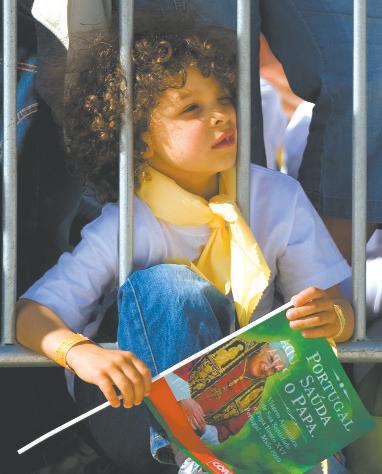
“What’s happened over the last few months, with the problems of the abuse scandal, could lead one to think that attention and energy toward the Pope has been weakened, but that hasn’t happened,” Fr Lombardi told reporters on 13 May.
“The fact that the strength of the faith is shown in such an evident way, in this situation, is very encouraging,” he said.
In Porto, the people expressed gratitude for his visit though a variety of gifts, including a porcelain vase with the city’s coat of arms, an anthology of local verse and poetry, and an ultralight guitar constructed of carbon fibre. The most unusual gift was an innovation created by a former Catholic university student in Porto: a “VitalJacket,” an electronic T-shirt that clinically monitors a person’s heartbeat.
This one was specially made in white.
Standing on the balcony of the Porto City Hall, Pope Benedict told the crowd he would happily extend his visit, but he had to return to Rome.
All along the Pope’s motorcade route to the airport, residents hung out their best tablecloths and bedspreads as a visual greeting.
In his farewell address at the Porto airport, the Pope told Portuguese President Anibal Cavaco Silva and the crowd that gathered to say goodbye: “I shall long remember the heartfelt and affectionate welcome that you accorded me, the warmth and spontaneity with which bonds of communion were established with the groups that I was able to encounter.”

LISBON, Portugal - Pope Benedict XVI arrived in Portugal for a four-day visit and urged its traditionally Catholic population not to close the door to God and religion.
For a humanity too often lacking in love and without hope for salvation, the Gospel still represents “the source of hope,” the Pope said after landing in Lisbon on 11 May.
The Pope’s words reflected growing Church concern that secularisation is making inroads in one of Europe’s most traditionally Catholic countries. In a talk at Lisbon’s airport, he reached out to non-Catholics and nonbelievers, saying the Church was ready to live in a pluralistic society as long as it can give witness to its beliefs.
“The Church is open to cooperating with anyone who does not marginalise or reduce to the private sphere the essential consideration of the meaning of life,” he said.
The pontiff, 83, looked happy and relaxed as he disembarked form his Alitalia charter flight from Rome. The ash cloud from an Icelandic volcano had forced the sporadic closure of Portuguese airports in recent days and threatened to disrupt the Pope’s arrival, but the Lisbon airport reopened in time.
He was met by President Anibal Cavaco Silva, a Catholic, who said he hoped the Pontiff would bring a message of hope, justice and solidarity to a country that is under serious economic pressure.
The Pope’s motorcade took him through a residential area of the capital, where thousands of people cheered, waved flags and tossed flower petals along the Pope’s path. Children released yellow and white balloons as the Pope passed by.
The main purpose of Pope

Benedict’s trip was to visit the sanctuary of Fatima, where Mary appeared to three shepherd children in 1917.
At the brief airport ceremony in Lisbon, the Pope said he came as a pilgrim to pay tribute to an event that did not depend on the Pope or any church authority, but came directly from God.
At Fatima, the Pope said, “Heaven itself was opened over Portugal - like a window of hope that God opens when man closes the door to Him.”
He said Mary had come to remind people that a relationship with God is essential for human beings, part of man’s search for truth, goodness and beauty. Faith in Christ, he said, has a logical impact in other spheres.
“From a wise vision of life and of the world, the just ordering of society follows,” he said.
The Pope said the separation of Church and State in Portugal, which followed the Republican revolution a century ago, turned out to be a good thing for the Church, challenging its members to live their faith more fully.
“Living amid a plurality of value systems and ethical outlets requires a journey to the core of one’s being and to the nucleus of Christianity so as to reinforce the quality of one’s witness to the point of sanctity,” he said.
For the modern Christian, he added, this mission path can some-
times lead to the “radical choice of martyrdom.”
The Pope’s visit came as cultural and political developments were challenging Portugal’s Catholic identity. The country legalised abortion three years ago and appeared poised to legalise samesex marriage later in May.
Speaking to reporters aboard his plane, the Pope said secularisation in Portugal was not something new but had taken a more radical turn in recent years.
He said it was essential that the Church engage in a dialogue with culture, making its voice and its social teachings heard.
President Silva’s welcoming speech reflected the growing uneasiness of many Portuguese over the economic future. Portugal’s slumping economy has prompted the government to enact an austerity plan, triggering resentment and a series of strikes. Silva said the country’s people were looking to the Pope for a message of justice and solidarity, “particularly when the effects of a global economic crisis make themselves felt, at times brutally and unfairly.”
“The Portuguese will listen to you,” he told the Pope.
Aboard his plane, the Pope said the current economic crisis had made clear that financial markets cannot operate on pure pragmatism, without a moral and ethical dimension. He said the Church needs to pursue a serious dialogue so that its social teachings make an impact in the economic realm.
The Pope was a guest of honour at an elaborate official welcoming ceremony at Lisbon’s Hieronymites Monastery, a 16th-century complex from which many of the Portuguese explorers and missionaries set out on their expeditions. After taking a tour of the monastery, the Pope entered the ancient monastic church to pray in front of the Blessed Sacrament.
From there, his Popemobile was accompanied along Lisbon’s main streets by a horseback unit of the Republican National Guard to the presidential palace, where the Pope held private talkes with Silva.

Pope says Mary’s message at Fatima still important for humanityBY JOHN T HAVIS Catholic News Service
FATIMA, Portugal - Celebrating Mass at Fatima, Pope Benedict XVI said the prophetic mission of Mary’s apparitions there has not ended and has special relevance for a world still caught in a “cycle of death and terror.”
Speaking to a vast crowd at the Portuguese sanctuary, the Pope said the message of Fatima was especially relevant at a time of waning belief in the divine and of continuing strife among peoples.
“We would be mistaken to think that Fatima’s prophetic mission is complete,” the Pope said.
From the earliest times, he said, humanity “has succeeded in unleashing a cycle of death and terror, but failed in bringing it to an end.”
The German Pope celebrated the liturgy on 13 May, the anniversary of the first in a series of six Marian apparitions to three shepherd children in the village of Fatima in 1917. After arriving in his Popemobile, he stood at the altar and looked out on an estimated 500,000 people who held up crosses, icons and the flags of many nations.
As sunshine broke through rain clouds, a Neocatechumenal Way group from Moscow unfurled a large banner near the altar that read: “Mary, thank you for your help to Russia.”
Many of the pilgrims had walked, some more than 100 miles, to reach the sanctuary in Portugal’s hilly interior.
Rose Herlihy, a 17 year old from Virginia, stood near the altar holding an American flag. She came to Fatima this year with her grandmother and said the sanctuary was a special place.
“You always can feel Our Lady here, you can feel her watching out for you,” she said.

When he arrived in Fatima on 12 May, the Pope prayed before a statue of Mary that stands at the site of the apparitions. He paid tribute to his predecessor, Pope John Paul II, who was convinced that the “secrets” of Fatima had a personal connection to the assassination attempt made against him on 13 May 1981.
At the Mass, Pope Benedict offered a less personalistic perspective on the apparitions and the messages of Fatima.
He said some people might react with jealousy to Mary’s apparitions to the three young visionaries, disappointed that they have not had such experiences. But that’s a mistake, he said, because God’s power is great.
“God ... has the power to come to us, particularly through our inner senses, so that the soul can receive the gentle touch of a real-
ity which is beyond the senses,” he said. The Pope has described the Fatima apparitions as “interior visions” that are real but are not perceived through the normal human senses.
“For this to happen, we must cultivate an interior watchfulness of the heart which, for most of the time, we do not possess on account of the powerful pressure exerted by outside realities and the images and concerns which fill our soul,” he said.
Fatima’s message and mission are not over, the Pope said, because the need for penance and conversion in the world continues.
He gave thanks that the spiritual movement set in motion by the events at Fatima has spread all over the globe, and he looked ahead to 2017, when the world will celebrate the 100th anniversary of the apparitions.
The Pope’s remarks reflected his long-held view that the Fatima apparitions did not announce particular apocalyptic events, but a more general succession of trials for the Church.
On the first day of his trip to Portugal, speaking to reporters on his plane, the Pope suggested that the Fatima prophecy of a time of suffering for the Church could refer, in a general way, to the priestly sex abuse crisis. He cautioned, however, against tying the Fatima messages too specifically to particular persons or experiences.
The third secret of Fatima’s vision of a “Bishop in white” who falls dead after being shot by soldiers was understood by many as referring to Pope John Paul II, who was seriously wounded but survived the 1981 shooting.
On his plane, Pope Benedict suggested that the Pope in the
vision may stand for the whole Church, which makes the message of Fatima a kind of permanent challenge.
“The Lord told us that the Church will always be suffering in various ways, up to the end of the world. The important point is that the message, the answer of Fatima, is not substantially addressed to particular devotions, but is the fundamental response: permanent conversion, penance, prayer, and the three cardinal virtues: faith, hope and charity,” he said.
The Vatican spokesman, Jesuit Fr Federico Lombardi SJ, told reporters on 12 May that the Pope understands Fatima as an open-ended call to conversion, in response to situations of suffering in the Church that arise from sin.
Today, the spokesman said, there is a focus on clerical sex abuse, but in five or 10 years there could be another crisis from inside or outside the Church.
Fr Lombardi offered a hypothetical example: Perhaps, he said, the Church will be seen one day as not close enough to the poor, as too closely tied to earthly goods, and in need of conversion. The message of Fatima would be valid for that situation, too, and for many others, he said.
At the end of the Mass, Pope Benedict spent time with the many sick and disabled people near the altar.
He offered them a special greeting, saying that by identifying with Christ, they can give meaning to their own suffering.
“You can overcome the feeling of the uselessness of suffering which consumes a person from within and makes him feel a burden to those around him when, in reality, suffering which is lived with Jesus assists in the salvation of your brethren,” he said.
Afterward, the Pope prayed before the tombs of the three Fatima visionaries: Blesseds Francisco and Jacinta Marto, who died at a young age and were beatified 10 years ago, and Carmelite Sister Lucia dos Santos, who died in 2005. Her canonisation cause is pending.
‘Christian priority is to be a counter-cultural witness’
In Portuguese capital, Pope urges Catholics to re-evangeliseBY JOHN T HAVIS Catholic News Service
LISBON, Portugal - At a Mass for more than 100,000 people in Portugal, Pope Benedict XVI urged Catholics to re-evangelise society by witnessing the joy and hope of the Gospel in every sector of contemporary life.
“Today’s pastoral priority is to make each Christian man and woman a radiant presence of the Gospel perspective in the midst of the world, in the family, in culture, in the economy, in politics,” the Pope said on 11 May at an open-air liturgy in Lisbon, the Portuguese capital.
To evangelise effectively, he said, Catholics themselves need to grow closer to Christ.
“Bear witness to all of the joy that his strong yet gentle presence evokes, starting with your contemporaries. Tell them that it
is beautiful to be a friend of Jesus and that it is well worth following Him,” he said.
The Pope celebrated the Mass on a canopied altar overlooking Palace Square, which was packed with enthusiastic faithful. When he arrived in his Popemobile, they chanted, cheered and held homemade signs welcoming Bento XVI, as he is known in Portuguese.
Despite a forecast of rain, sunshine lit the square and the Tagus River in the background, where schooners and other vessels cruised slowly. It was the first liturgical moment of a four-day visit that was also to take the Pope to the Marian sanctuary of Fatima and the industrial city of Porto.
On the plane carrying him and his entourage from Rome, the Pope told reporters he was concerned about radical forms of secularisation that threaten the religious traditions of countries such as Portugal.
In his homily in Lisbon, which the Pope delivered in Portuguese, he said that despite Portugal’s long Catholic tradition, it is “less and
less realistic” to presume that the Christian faith is present among its people. Part of the problem, he said, is that the Church may have placed too much trust in ecclesiastical structures, programmes, powers and functions.
The Pope said it was important now to return to more fundamental things and to proclaim with vigour and joy the death and resurrection of Christ, the “heart of Christianity.”
“A vast effort at every level is required if every Christian is to be transformed into a witness capable of rendering account to all and at all times of the hope that inspires him,” he said.
He asked Catholics to grow in friendship with Christ, listen to his words more carefully and learn to recognise Him in the poor.
“With your enthusiasm, demonstrate that, among all the different ways of life that the world today seems to offer us - apparently all on the same level - the only way in which we find the true meaning of life and hence true and lasting joy is by following Jesus,” he said.
The Pope said that while the Church may have “quarrelsome and even rebellious sons and daughters,” the real models of holiness are its saints. He reminded Portuguese Catholics of their own rich history of saints and missionaries who have taken the Gospel to every continent and helped shape cultures all over the world.
Earlier in the day, Pope Benedict said the Church was ready to live in a pluralistic society as long as it can give witness to its beliefs, and as long as religion was not reduced to the private sphere.
His message was aimed at the increasing numbers of Portuguese who have fallen away from practice of the faith.
In theory, Catholics represent 88 per cent of the population in Portugal, but the number of practicing Catholics is diminishing.
Portuguese Church leaders are also concerned about other trends - for example, Portugal’s marriage rate has declined by 40 per cent over the past 25 years, while its divorce rate has soared over the same period.
The Church’s own statistical markers signal similar tendencies in Portugal: a gradual and persistent decline in the numbers of baptisms, Church marriages, first Communions and confirmations, along with a drop of nearly 60 per cent in the number of seminarians over the past 35 years.
Portugal’s pluralism today includes an increasing immigrant population. In a talk to the Pope at the start of the Mass, Cardinal Jose da Cruz Policarpo of Lisbon said the capital has welcomed outsiders, including those of different faiths, with love and respect.
The Church is committed to dialogue and seeking common values, he said, and “a Catholic majority does not rob anyone of his place” in society.
At the end of the liturgy, the Pope read a message blessing a giant statue of Christ the King that stands on a hill above Lisbon.
He said the statue should inspire Catholics to build a society based on Gospel values, in particular by working in favour of the poor and the oppressed.

AS Philippine voters went to the polls on 10 May, a Bishop ordered all priests to expose the Blessed Sacrament so that the faithful may pray for a presidential election untainted by corruption.
“People were filled with fear and concern because of reports about a sinister plot to effect failure of election due to some glitches in the PCOS (precinct count optical scan) machines,” said Bishop Leo Drona of San Pablo. “There is also the threat of another ‘people power’ and the fear of alleged plans by some sectors to cheat to ensure victories for their candidates.”

PARTICIPANTS at a funeral were attacked by police and 59 of them were arrested. The episode was denounced by the Bishop of Da Nang in central Vietnam, Mgr Joseph Chau Ngoc Tri, in a pastoral letter condemning the incident and calling on the faithful and authorities to control themselves to prevent further violence.
In the document dated 6 May, the Bishop reported that on 4 May, in the parish of Con Dau, during the procession for the funeral of Mary Tan, 82, police intervened to prevent the burial in the cemetery.
For almost an hour there were clashes between the faithful and 500 police resulting in the arrest of 59 people.
“The police went looking for other believers,” the Bishop wrote.
The Vietnamese government denied that the Catholics were arrested or injured. According to the spokesman of Foreign Ministry, Nguyen Phuong Nga, “this information is false and aimed only to slander Vietnam”.
“The truth is that this affair has nothing to do with religion,” she said.
Nga had denied the burial was blocked, but added that it is known that the cemetery is located in an area destined for a new residential zone and so cannot be used.
The Bishop has called for the immediate release of those arrested.
The cemetery, where many Catholics have been buried, has become attractive in the recent hike in land values and one on which local authorities, it seems, are planning to build a tourist resort.

THE German Government has dropped an investigation into sex-abuse charges against Bishop Walter Mixa, whose resignation was accepted by Pope Benedict XVI earlier last week.
Bishop Mixa had stepped down from his post as head of the Augsburg diocese after admitting that he had engaged in physical abuse - slapping students - at a school where he worked years ago.
The Bishop had denied the sex abuse charges. The government closed its investigation of the sex abuse claims because there was not sufficient evidence of any crime.
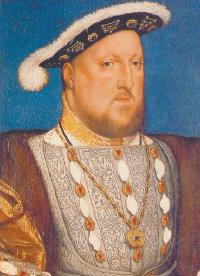
THE Church of England has inched closer to the ordination of women Bishops with the release of draft legislation on 8 May that would make it “lawful for the General Synod to make provision by Canon for enabling a woman to be consecrated to the office of Bishop.”
The legislation will be debated in July.
According to the Church of England website, a Revision Committee has met on 16 occasions over the past 12 months and considered 114 submissions from members of the General Synod and a further 183 submissions from others.
After much discussion, the committee rejected proposals aimed at fundamentally changing the approach of the legislation, whether by converting it into the simplest possible draft measure or by creating more developed arrangements – whether through additional dioceses, a statutorily recognised society or some transfer of jurisdiction – for those unable to receive the ministry of female Bishops.

VATICAN CITY - An international network of women’s Religious Orders has launched a worldwide awareness campaign aimed at preventing human trafficking during the 11 June-11 July World Cup soccer tournament in South Africa.
The campaign, titled 2010 Should Be About the Game, has been targeting fans, religious leaders, potential victims of trafficking and the general public - warning them about the risks and urging them to spread the word.
Using the 2010 World Cup to exploit vulnerable women, children and men for slave labour, the sex industry or the drug trade is “an outright perversion of the spirit and ethical dimension of sport as well as of the idea and dignity of the human person,” said Salesian Sr Bernadette Sangma.
Sr Sangma, who coordinates the anti-trafficking project of the International Union of Superiors General, and others spoke at a Vatican news conference on 6 May.
A similar anti-trafficking campaign coordinated by the superiors general and the International Organisation for Migration was highly successful during the 2006 World Cup in Germany, said Stefano Volpicelli, a migration office official who has been working with the Sisters. Fewer than 10 cases of human trafficking were discovered in the run-up to and during the month-long games in 2006, he said. The campaign was successful, he said, because intense media attention to the problem led German authorities to take proper precautions, including tightening border controls and increasing police presence and inspections on the local level.
But most importantly, “for the first time the kind of fans at the World Cup were different,” he said.
They weren’t the stereotypical rowdy groups of males or troublemaking individuals, but predominantly families and young couples, Volpicelli said. Unfortunately, the situation in South Africa will probably not be the same, he said.
For one thing, the nation’s borders are extremely porous, making it fairly easy for traffickers to shuttle in victims undetected, he said.
There is also no law in South Africa against human trafficking, which means not only are there no penalties against people committing this internationally recognised

crime, there are also no special police units dedicated to investigating and cracking down on traffickers, he said. Another problem is that the government decided to close schools nationwide for the duration of the tournament, which, Volpicelli said, will make children even more vulnerable to falling prey to deceptive job advertisements. Kids will see the time off from school as “a golden opportunity” to make money, he said, but traffickers might take advantage of that and promise them a chance to make quick and easy cash.
Traffickers often lure unsuspecting people by promising them legitimate jobs in restaurants or hotels only to force them into prostitution or other illegal activities, he said.
Another concern, he said, is that the public’s perception of South Africa is that it’s a dangerous place, which will probably discourage many families from attending. That means the fan base might be overwhelmingly composed of men, who come alone or in groups unaccompanied by family members, he said. The women’s Religious
Orders’ international network called Talita Kum, Aramaic for “Get Up,” is carrying out an awareness campaign in South Africa, neighbouring countries, countries where large numbers of fans are expected to come from, and countries such as Thailand, where victims of trafficking are likely to be targeted, said Sr Sangma.
They are working closely with the South African Bishops’ Conference and the South African government, which has set up a toll-free number for victims to call for help or for whistleblowers, she said. The network is made up of 252 women’s Religious Orders and it works with the international migration group; the network receives funding from the US State Department.
The Talita Kum network is one of more than a dozen networks that the superior generals have formed since 2004 to educate and warn potential victims of trafficking, to work to combat the poverty that feeds the trade in human beings, and to rescue and provide shelter and rehabilitation for the victims.
CAPE TOWN, South Africa (CNS) - Church officials praised South African President Jacob Zuma for repeatedly testing for HIV and announcing his status, saying it indicated a new political willingness to address the AIDS epidemic in South Africa.
Zuma’s 25 April public disclosure that he recently tested negative for HIV, the virus that causes AIDS, “is very significant in this country where the stigma attached to AIDS is so strong,” said
Dominican Fr Mike Deeb, director of the justice and peace department of the Southern African Catholic Bishops’ Conference. A new government initiative aims to test 15 million people by the end of June 2011 and to provide antiretroviral drugs to 80 per cent of South Africans in need of treatment. At the initiative’s launch at Natalspruit Hospital, east of Johannesburg, Zuma, 68, said the country would need to tap
retired health workers to help staff the campaign. He added that his recent test was the third time he had been tested. The UN says 5.7 million of South Africa’s 48 million population are HIV-positive.
“So many people are afraid of being tested and Zuma’s action could give others courage,” Fr Deeb said, noting that with “lifesaving treatment available, it might be devastating for people to find out they are HIV-positive, but it is not the end of the world.”

The Inquisition and Index: Vatican records shed light on dark legend
BY CAROL GLATZ Catholic News Service VATICAN CITY -The Roman Inquisition and the Index of Forbidden Books obviously do not represent the brightest chapters in Catholic history, but newly published documents from Vatican archives should help scholars distinguish between the truth and the dark legends.
Hundreds of documents detailing the Church’s investigations of individuals and of written works during the Roman Inquisition have been published - most of them for the first time - in a new series released by the Vatican.
Reproducing records from the Inquisition’s activities - records held in the formerly secret archives of the Congregation for the Doctrine of the Faith - the series hopes to shed light on how the Roman Inquisition really worked and to dispel age-old biases.
A lack of access to the archives, which were opened to the public only in 1998, meant some scholars and historians made “sweeping generalisations without sufficient foundation” about the Church’s aims during the Inquisition, a former papal theologian wrote in the volume’s preface.
Cardinal Georges Cottier, theologian of the papal household under Pope John Paul II, wrote that by focusing only on cases in which the Church acted extremely harshly - such as the condemnation of Galileo Galilei and the burning at the stake of Giordano Bruno, some historians concluded the Church was engaged in a vicious war against science.
It is “misleading to see the activity ... as a struggle against science undertaken in the name of faith” when the Roman Inquisition actually was concerned more with preventing Protestant ideas from spreading, he wrote.
Released at the Vatican on 12 May, the first volume represents 13 years of organising, studying, cataloguing, and then transcribing thousands of documents from the Roman Congregation of the Holy Office, which dealt with individuals suspected of heresy, and the Congregation of the Index of forbidden books, which handled the suppression or correction of written works.

Titled Catholic Church and Modern Science: Documents from the Archives of the Roman Congregations of the Holy Office and the Index, the series’ first volume reproduced all the doctrinal congregation’s documents concerning science and natural philosophy from 1542 to 1600.
The volume contains the documents in their original language - Latin - but offers extensive footnotes, summaries and commentary in English by co-authors Ugo Baldini - a history professor at Italy’s Padua University and an expert on Galileo Galilei - and Leen Spruit - an expert on the censorship of science in early modern history.
Spruit told CNS that the Roman Inquisition did not target science and natural philosophy. Rather, he said, certain individuals and authors were condemned “often for their faith or religious creed.”
A perfect example, he said, is Nicolaus Copernicus, the 16thcentury Polish scientist who first proposed in 1543 that the earth revolved around the sun - a theory that would get Galileo in trouble a century later.
Copernicus was virtually ignored by censors until a Protestant wrote about his work and that author was put on the Index, not for supporting heliocentrism, but for being a Protestant, the book said.
Scientific ideas and propos-
als never mattered to inquisitors unless those theories negatively impacted the Church’s religious view of mankind, he said.
And then it was the unorthodox anthropology that received condemnation, not the science, he added.
The first and only purely scientific trial the Roman Inquisition pursued was against Galileo, “and I think they consider that now as a very big mistake,” said Spruit.
In addition, scientific works like those written by Copernicus and Galileo were not condemned until they were published in the vernacular rather than in Latin, he said, “because then they could be more dangerous for a broader audience.”
New documents pertaining to Galileo’s trial are to appear in the series’ next volume dealing with the 17th century, which is expected to come out in 2014.
The authors asked what kind of impact the Inquisition had on the scientific community and if it hampered scientific progress.
While the authors didn’t claim to have the answers, they did suggest historians will now be able to make a more honest assessment based on the series’ full reproduction of the archives.
The authors wrote that of the 86 cases handled in the 16th century, the majority of individuals involved were given very lenient sentences and their careers most
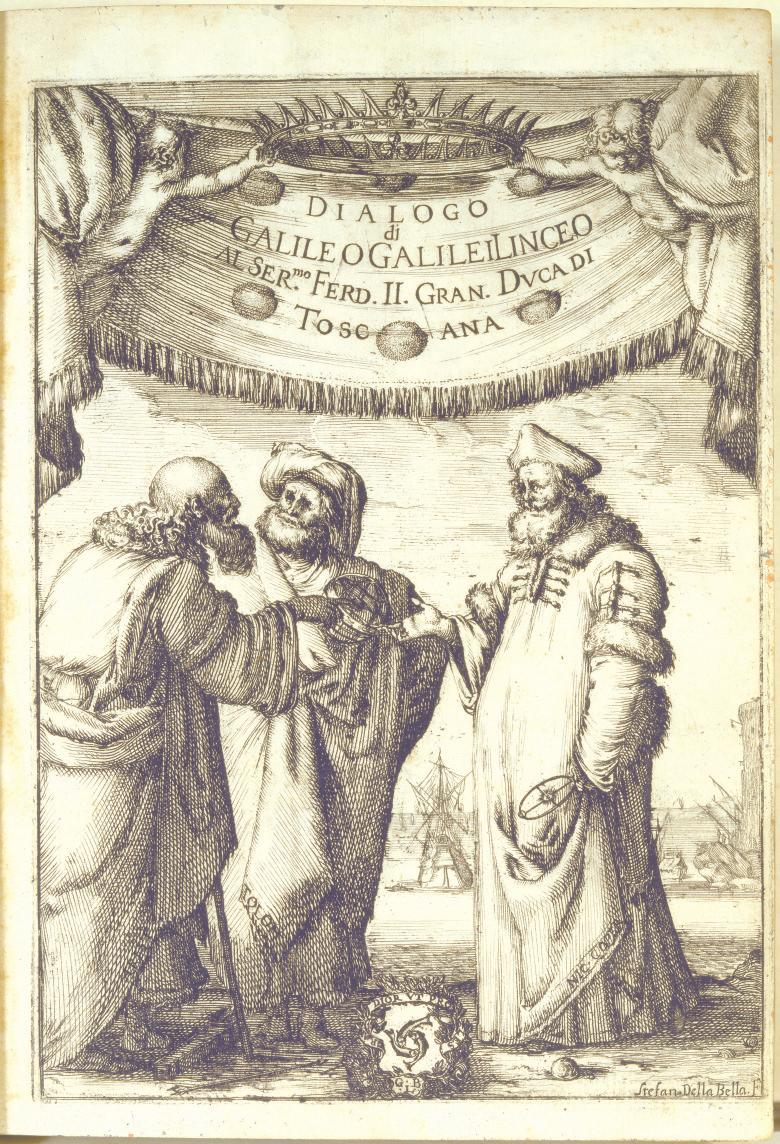
often continued to thrive. Baldini said authors in some disciplines, particularly astrology, became “more cautious” and censored more “risky” ideas themselves before publication.
The Inquisition certainly produced a climate of fear and intimidation, they wrote, but any claim that it was so oppressive that science was stunted “is enormously exaggerated,” Baldini said.
In the authors’ opinion, scientific advancement depends greatly upon economic development and available technology, not just religious or cultural approval.
Also, it was fairly easy to get permission to read a banned book, they wrote, and forbidden books were in wide circulation.
Even though the Roman Inquisition obviously violated many of today’s basic human rights, the inquisitors actually introduced novel juridical procedures that are now fundamental in modern democracies, they wrote.
According to the book’s authors, the Inquisition’s juridical
DUBLIN, Ireland (CNS) - The lack of willingness in the Catholic Church to begin “a painful process of renewal” in the wake of the clerical abuse scandals has left Dublin Archbishop Diarmuid Martin “disheartened and discouraged.”
In a talk to the Knights of St Columbanus on the future of the Church in Ireland, the Archbishop said the most obvious source of his discouragement was “the dripby-drip, never-ending revelation about child abuse and the disastrous way it was handled.”
“There are still strong forces which would prefer that the truth did not emerge,” he said. “The truth will make us free, even when
that truth is uncomfortable. There are signs of subconscious denial on the part of many about the extent of the abuse which occurred within the Church and how it was covered up. There are other signs of rejection of a sense of responsibility for what had happened.
“There are worrying signs that despite solid regulations and norms these are not being followed with the rigor required.”
In what some saw as a reference to the refusal by Bishop Martin Drennan of Galway and Kilmacduagh to resign, Archbishop Martin said: “Renewal of the Church requires participation and responsible participation.
“I have spoken about the need for accountability regarding the scandal of sexual abuse. I am struck by the level of disassociation by people from any sense of responsibility. While people rightly question the concept of collective responsibility, this does not mean that one is not responsible for one’s personal share in the decisions of the collective structures to which one was part.”
Bishop Drennan was one of four former Dublin Auxiliary Bishops named in a November report by an independent commission that criticised the way sexual abuse cases were handled by bishops in the Dublin Archdiocese.
Earlier in 2009, the independent Commission to Inquire Into Child Abuse revealed that, in some government institutions run by religious orders, abuse of children had been endemic. The commission heard from more than 10,000 former residents of the homes who alleged abuse. Archbishop Martin also said he is working on plans to ensure that for the future in Dublin its seminarians, prospective deacons and trainee lay pastoral workers will share some sections of their studies together to create a better culture of collaborative ministry.
“The narrow culture of clericalism has to be eliminated,” he said.
tions included “the defense attorney, testimony under oath, appeals to a higher court, the adoption of the principle ‘unus testis nullus testis,’” in which uncorroborated testimony is inadmissible, as well as reducing life sentences to a few years of incarceration and offering a public defender for the poor.
VATICAN CITY - Pope Benedict XVI has handed his editors the final draft of the second volume of his book, Jesus of Nazareth, but it will be months before the work is translated from German and published, the Vatican said on 10 May. “This second volume is dedicated to the Passion and the Resurrection, and takes up where the first volume ended,” the Vatican press office said. The first volume, published in 2007, covered Jesus’ life from his baptism to his transfiguration.
The Vatican said it hopes to release the book simultaneously in the world’s major languages, which means it might be “several months” before it gets to bookstores.
The first volume of the work, which ran more than 400 pages, highlighted what the Bible says about Jesus, what the moral implications of His teachings are and how reading the Scriptures can lead to a real relationship with Jesus.
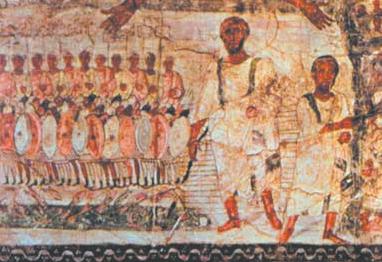
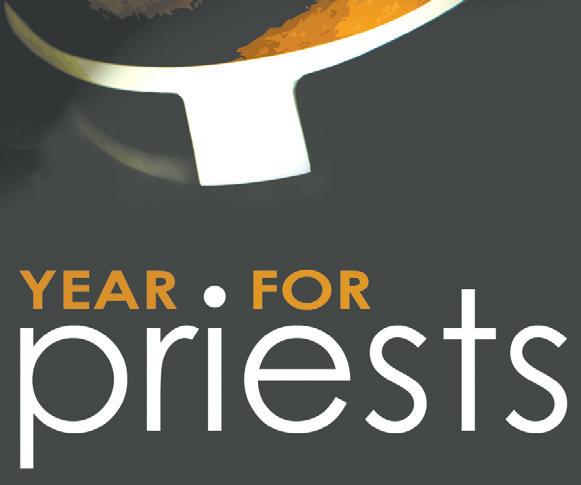

In this the Year for Priests, a renowned speaker on the Eucharist continues his series on the Mass: Faith-filled Intercessions
Intercessions ( Tefillah ) follow the Berakah. The reason for this is that God is the same yesterday, today and forever. Since He has been so good to us in the past, he will certainly bless us in the future too.
Thus, in the Eucharistic Prayer we find a number of petitions –for the Holy Father, Bishops and clergy and so on. The key point is to make these petitions with a lively faith that the Lord will not deny us anything we ask for in faith.
Also, we remember that here our petitions are especially powerful for they go up to the Father precisely as the prayer of Christ himself.
The Doxology ends with the response ‘Amen’ signifying not only assent: ‘Yes, I agree with what has been said’ but also expresses a firm commitment to fulfill what has been said.
So, to the Celebrant’s prayer: ‘… may all honour and glory be yours heavenly Father forever and ever,’ the community’s response ‘Amen’ means: ‘We will ensure that this becomes a reality, that all honour and glory is actually given to the Trinity for ever and ever.’
During the rest of the day, therefore, our commitment is to continue to praise God through the berakah. For the Christian no number is actually stipulated for he praises God always and everywhere.
Thus our entire day becomes a continuous hymn of praise to the Trinity.
The practice of praising God in all circumstances is rooted in a particular ‘philosophy of life’ based on the following elements:
The Exodus Experience: From their experience in Egypt, the Israelites realised one very important truth, viz. that when God chooses to bless someone, no power on earth can ever stop him.
Thus, Pharaoh delayed the departure of the Israelites from Egypt by placing various obstacles, but he could not prevent God from carrying out His designs. In the end God always wins.
Similarly, when adversity comes their way, the Jews interpret it as being only a temporary set-back.
They remember that in the end God will most surely win, and so rather than wait till they actually see God’s powerful victory, they anticipate it in a burst of praise. This explains their capacity to praise God even in adverse circumstances.
The Covenant Experience: From among all nations, God chose to make covenant with Israel only. During their desert journey, Israel discovered that God is always absolutely faithful to his promises … also that he does not take pleasure in the death of a sinner, but rather desires that he live.
God’s designs are always positive, life-giving and life-oriented. So, when something ‘bad’ happens, the Jews see it against the background of the Covenant: God has freely blessed us with his very special friendship, so no negative experience, not even our sins will make him revoke his choice.
In the end, God would bring some good out of the bad event, in keeping with his Covenant promise. And so, without having to wait to ‘see’ that good, they praised God immediately.
Besides these two, the Christian has also a third experience - the Christ Experience: “God so loved the world” … Jn 3:16; “If God is for us, who can be against us” … Rom 8:28-39. When we have really understood the gift of son-ship the Father freely gives us, then joy and gratitude will truly characterise our lives.
God’s last word to us is not condemnation, suffering or death, but the joy of the resurrection and eternal life.
JJ von Allmen says: “Christian worship is normally celebrated in a banqueting hall rather than in a laundry.”
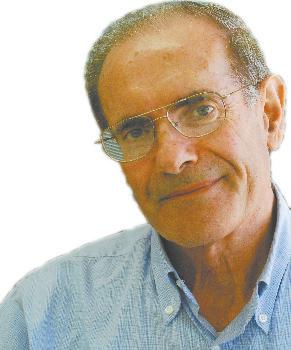
Iwill not hide a high degree of dissatisfaction and almost total frustration.
When anyone sets about the task of telling a story, it must make some sense, with its introductory and concluding sections falling into place.
But, in recalling the story of the diaconate in the contemporary Church, with its many different applications and interpretations, there seems scant option but to settle for the little that can be gleaned and to leave the door open to future developments.
These must inevitably occur, as the Church sets about drawing from its storeroom ‘things both old and new.’ One is reminded of the different ways in which hospitality is exercised towards migrants, as newcomers in the life of Christian communities, with a degree of accomodation, always needed but not always the same, which needs to be brought into play.
The main hub of the story, and the many issues involved seem to come back to the same question: are deacons the answer? But to what? If deacons are being proposed as a stopgap measure for the declining number of clergy, then they are not the answer.
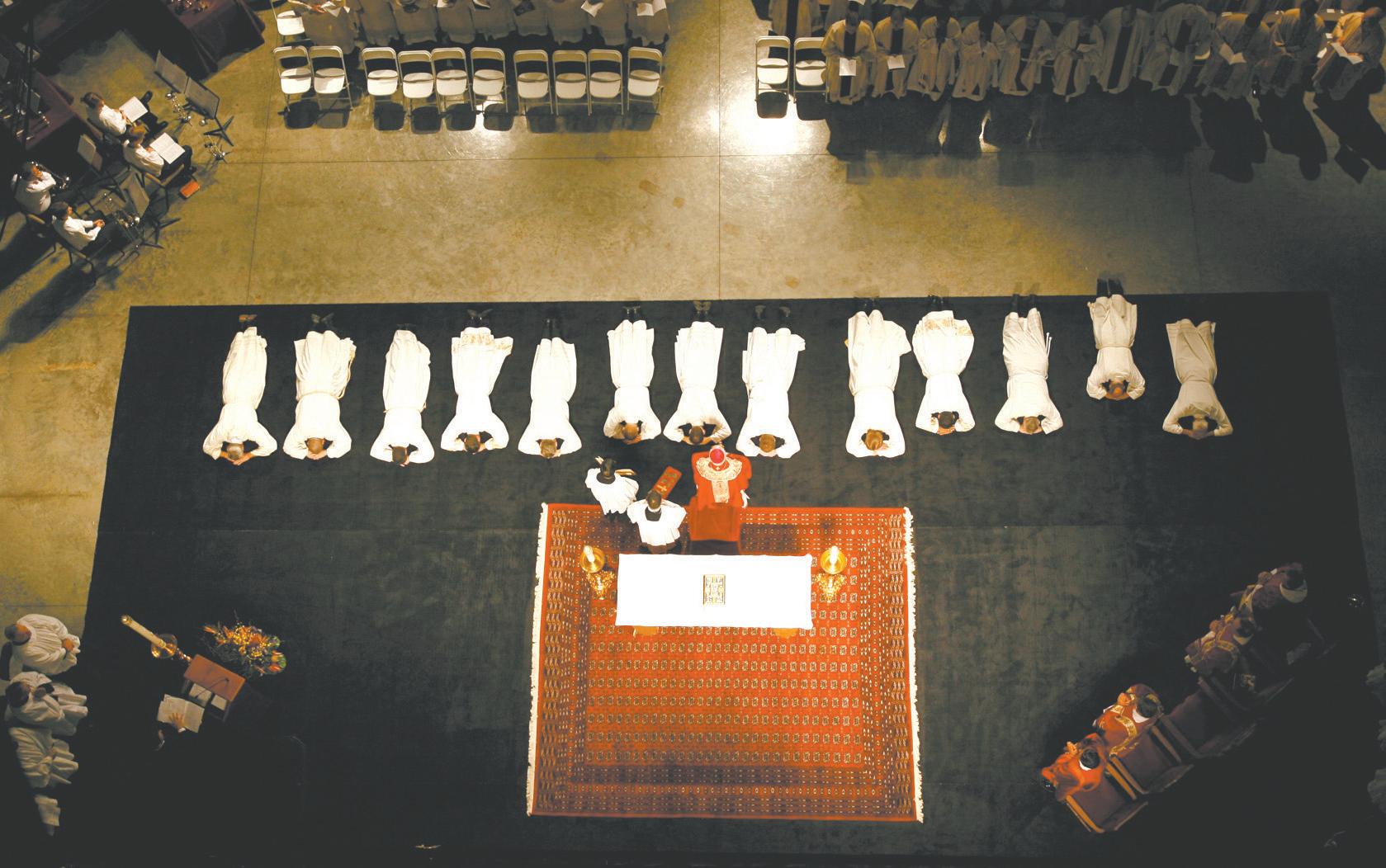
If deacons enter the arena of Church services out of a need to emphasise clerical ministry over lay ministry, then they are not the answer. If deacons are being looked upon as a means to stifle discussion in the Church about the role of women, then they are not the answer.
Instead, it might be important to realise that the diaconate is not the answer to anything. It is, however, part of the answer. As the diaconate is one face, and perhaps not the most obvious, of three faces - bishop-priest-deacon - which make up the living ministry of Christ in the world of today. It is truly a moment of creative tension.
I dare say that this must have been the feeling of the more than 2600 Catholic bishops who had gathered in Rome from around the world.
Yet, without any direct experi-
ence of the dynamic workings of a permanent diaconate, and relying on the tradition of the early Church, the Council decreed that the limited vision of ministry would be expanded to include the permanent diaconate. It is not so much the numerical growth of deacons over the last few decades, since the 1970s, that should make the difference. Rather I find that the difference the permanent diaconate is making lies elsewhere: in the call to a deepening sense of communion; in more concerted and combined ministry and vision in the Church, and less fragmentation, isolation and deviation at the local level: these nullify the call to unity sounded by Jesus. I am not implying homogeneity at any cost.
Diversity is a value to be lived within the context of one baptism, one Church and one ministry at the service of all.

Ruth Gledhill is a “religion correspondent” for the London Times, the paper which in Britain has been among the pack-leaders in the attack on the Pope. A few days ago she wrote, in part:
“In Britain Christians cry: ‘We are being persecuted.’ But the lions don’t exist beyond their imaginations or the arena beyond their story books. Lord Carey of Clifton, the former Archbishop of Canterbury, and his fellow victims are giving all Christians a bad name. It is time for liberals to stand up and say: ‘We will not be slain by this malevolent spirit, not even when the persecutors are our fellow Christians …’
“Christianity has always been big on victimhood and victims have to find a persecutor. Dr Rowan Williams, the Archbishop of Canterbury, has been known to grumble about his treatment by we beasties of the media - but even he thinks that the craze for victimhood has gone too far. He used his Easter Day sermon to focus on the truly persecuted in
countries such as Nigeria, not nurses complaining about being banned from wearing crucifixes.
“It’s not just so-called discrimination in the workplace. Conservative evangelicals and Catholics joined forces to promote Westminster 2010, a conscience manifesto launched on Easter Day to promote “Christian” values on poverty, abortion, marriage, euthanasia.
Lord Carey was among the signatories.
Most recently he urged senior judges to stand down from Court of Appeal hearings involving religious discrimination if their previous rulings were “hostile” to Christianity.
“Many leading judges are religious; many are not. But they are all fiercely independent and impartial. They are trained to set aside any personal prejudice. To suggest that they are antiChristian is not only insulting but fails to understand the oath they swear by Almighty God, to ‘do right by all manner of people, after the law and usages of this realm, without fear or favour, affection or ill will’.” And so on.
The document is an interesting illustration of the Stockholm syndrome, by which victims crave the approval of their persecutors and attempt to identify with their cause.
We saw it on a massive scale in Nazi-dominated Europe when millions of Jews and others shuffled off to the gas-chambers with astonishingly little resistance.
This did not just happen in Germany – 75,000 went from
France, for example. Weirdly, in the manner of George Orwell’s “doublethink” those who protest against persecution are denounced as persecutors – how many secret police, armoured divisions and arenas full of lions does Ms Gledhill think Lord Carey controls?
But note that she is not attacking violent resistance, merely the act of bearing witness in a completely peaceful manner- as Christians are enjoined to do.
Note too how cleverly the phrase “nurses complaining about being banned from wearing crucifixes” is slanted to make such complaints appear petty and contemptible.
Apparently it is also contemptible for Christians to protest against such manifest evils as euthanasia. Sacking someone for wearing a crucifix is not gassing them, but the principle here is in the same direction.
To pretend Christianity is not at present being singled out for persecution in Britain and a number of other European countries (as well as now in at least one case in Australia) is to invite more of the same.
Not only have Christians been sacked for wearing crucifixes to work (not merely having the crucifixes banned as Ms Gledhill states), or offering to pray for patients or pupils but, along with a thousand other pinpricks, Muslim “Community police” have prevented Christian evangelists with threats of beating from entering certain areas of English cities.
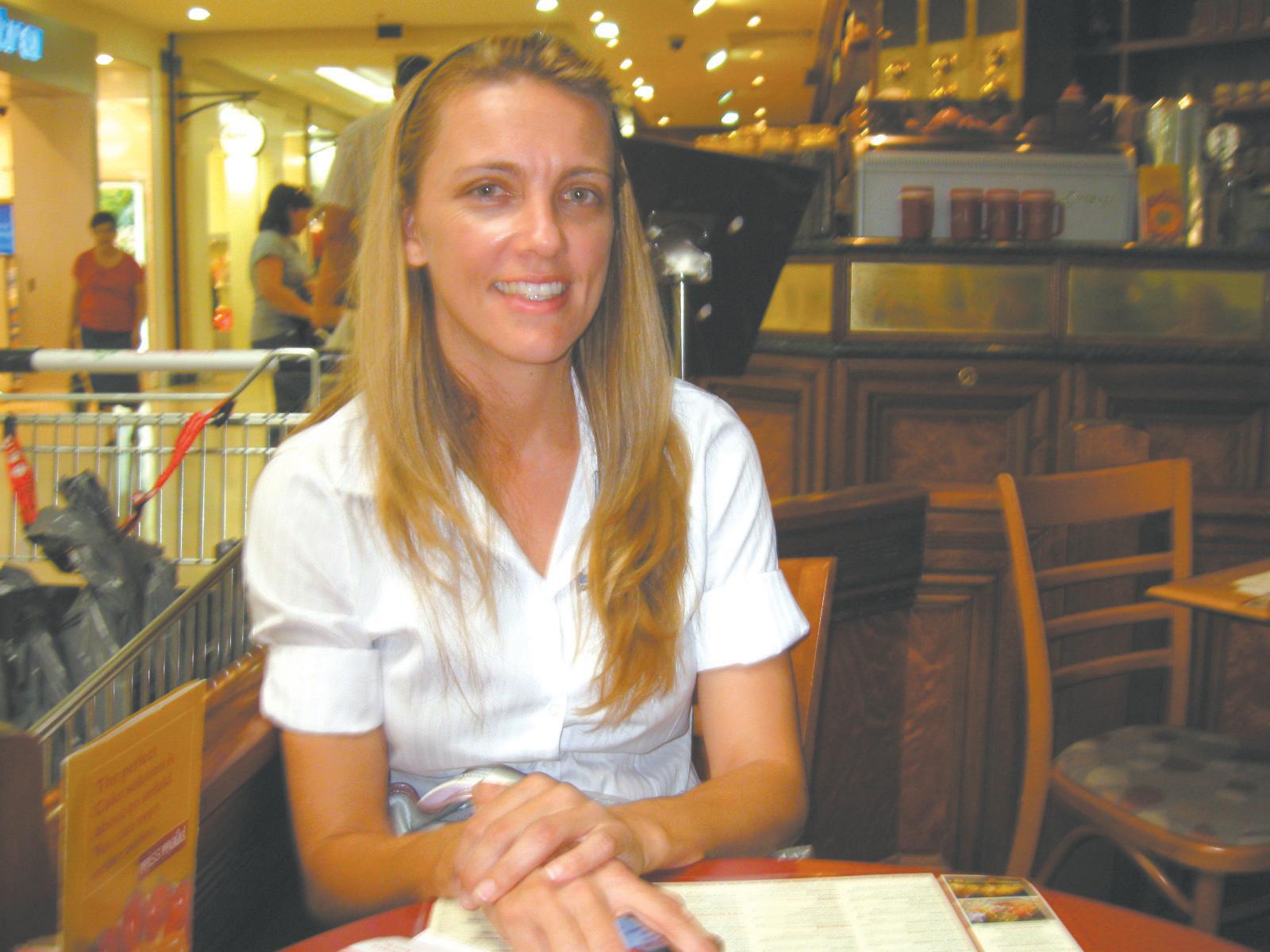
 with Debbie Warrier
with Debbie Warrier
My husband is Catholic and my kids were baptised Catholic. We were married at the Infant Jesus Church in Morley where we are parishioners.
I have been very involved in parish life for a long time because my children went to play group there. I always go to their school Masses. Part of my reason for becoming Catholic was because my whole family is Catholic. My children were shocked when they heard that I wasn’t baptised!
Previously when my family would go to receive Holy Communion I would just sit there hoping no one would notice that I didn’t get up. Going to the school Masses filled me with the desire to get the full enrichment of receiving the Eucharist with
my son and husband. I come from South Africa. My parents believed in God and I attended a Christian school. We had Bible studies and we used to sing hymns at our assemblies. We said the “Our Father” before we took our chairs off the desks in the morning. So the Catholic faith was not completely foreign to me although my parents did not go to Church or pray.
I talk to my kids about my beliefs and want to lead by example. When my husband and I were dating I remember my mother-in-law was about to serve dinner when she said, “Oh no. We can’t have chicken. It’s Ash Wednesday.” When I asked her why, she suggested I speak to Aunty Violet as Aunty Violet knows her faith. I think if you are Catholic, you should be practising. I want to be an active Catholic.
Aunty Violet is my sponsor and she is the nicest person you could ever meet. She would do anything for others like helping me with my ironing. She helps so many people. She’s really special.
Aunty Violet has been my strength during the RCIA process. It has been great sharing the experience with her.
One of the topics we talked
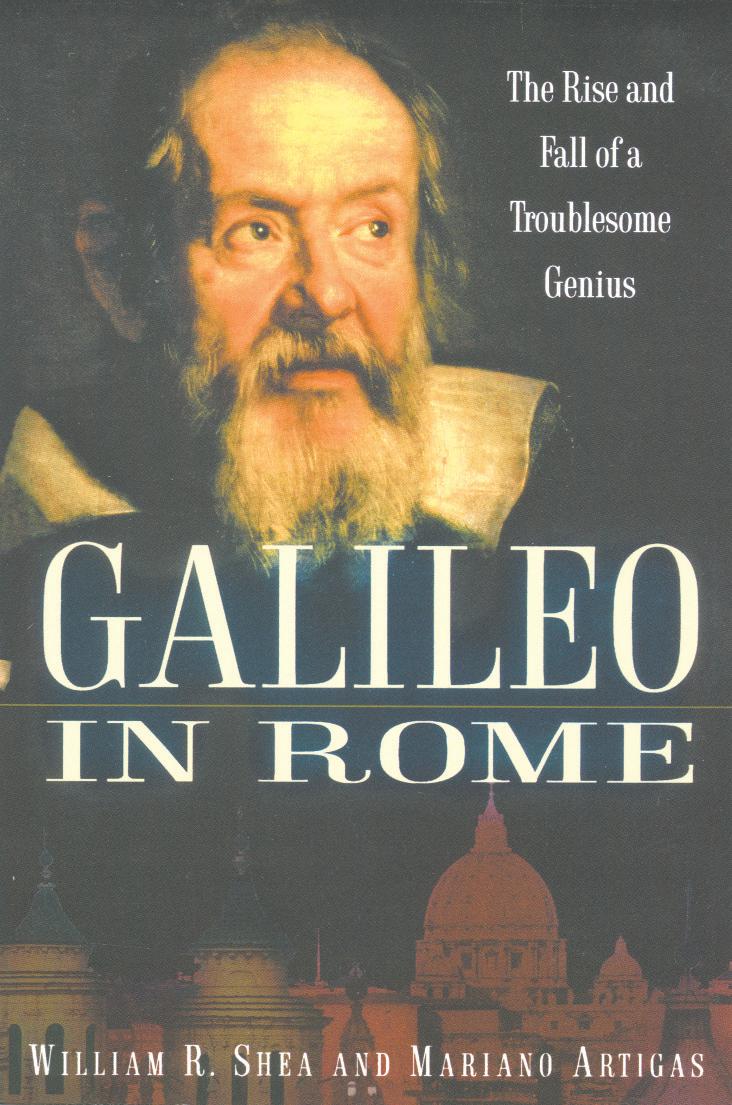

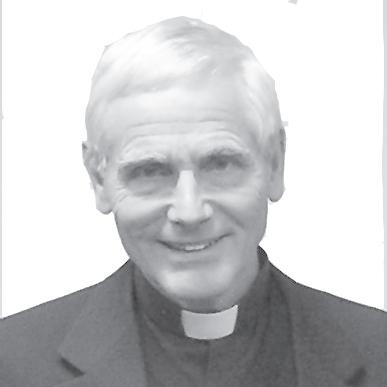 By Fr John Flader
By Fr John Flader
about was my son’s education. I was trying to get my son into a Catholic high school where he had been on the waitlist for a year. I felt a bit rejected by the Catholic community when I was told he didn’t have a place. Then we applied at a Christian high school and they offered him a spot within four weeks! Eventually I came to see that it was a good thing because my son has been a different person ever since and he is very happy. I really think that was God’s work.
My son initially told me that he did not want to do his confirmation as he didn’t feel worthy (he has since been confirmed). He also found some people difficult to get on with even though they were Catholic.
I encouraged him to be opened-minded, and told him we are all human. We can’t control what others do but we can try to be a better person ourselves. That’s what being Catholic is all about.
Friends of mine couldn’t understand why I wanted to convert to Catholicism but I don’t think they can make that judgment until they have travelled that journey. Since making the decision to be Catholic I have found a sanctuary in my heart.
By William R Shae and Mariano ArtigasI have several questions about bowing in Mass. First, are we still supposed to bow during the Creed? Very few people seem to do this. Does the person going up to do the readings bow to the altar or to the priest? And does a bow involve just the head or the whole body?
Iwill begin with your third question, basing the answer on Melboune Auxiliary Bishop Peter Peter Elliott’s book Ceremonies of the Modern Roman Rite Bishop Elliott points out that there are two types of bows used in the liturgy: the bow of the body, or deep bow, and the bow of the head. A bow of the body, in which the person leans forward from the waist, is made to the altar during Mass, to the celebrant before and after incensing him, and to a bishop, on approaching, leaving or passing in front of him. (n. 202)
Since Bishop Elliott writes primarily for ministers of the liturgy, not for the faithful in the pews, one could add the deep bow made before receiving Communion, if the person chooses to bow rather than genuflect or receive Communion kneeling.
Also to be added is the bow made by all during the Creed, at the words “by the power of the Holy Spirit, He became incarnate from the Virgin Mary, and was made man.”
On two days of the year, Christmas and the feast of the Annunciation, instead of bowing everyone genuflects on saying these words.
As you say, many people do not make this bow, but that is sad. Before the reform of the liturgy some 40 years ago, the whole congregation and the priest genuflected at these words every time the Creed was said.
No one questioned this gesture of respect for the great mystery of the Incarnation of the Son of God as man.
Yet since the genuflection was changed for a bow, many people
make no sign of reverence at all. In answer to your second question, Bishop Elliott points out that the reader, on going up to the sanctuary, bows first to the altar and then to the celebrant, before going to the lectern to do the reading. (n. 258)
Both bows are deep, made from the waist.
While the bow to the priest celebrant is not specified in the liturgical books, as it is in the Ceremonial of Bishops when a bishop presides (nn. 76-77), it may be taken as a customary sign of respect for the priest. For this reason Bishop Elliott includes it in his book. (n. 258)
Some people may wonder why the reader does not genuflect to the tabernacle when going up to the sanctuary. The reason is that the General Instruction of the Roman Missal provides that if the tabernacle with the Blessed Sacrament is present in the sanctuary, “the priest, the deacon, and the other ministers genuflect when they approach the altar and when they depart from the sanctuary, but not during the celebration of Mass itself.” (GIRM, n. 274)
The other type of bow is the bow of the head alone, often accompanied by a slight bow of the shoulders.
This bow is made by the celebrant of the liturgy at the mention aloud of the three Divine Persons (eg during the first part of the “Glory be to the Father”), and on pronouncing the holy names of Jesus, Mary and of the saint in whose honour the Mass is being celebrated. (cf GIRM n 275)
Many of the faithful have the custom of bowing their head whenever they pronounce the name of Jesus or Mary.
Also, it is sometimes customary to bow to the priest when the faithful take up various objects in the procession of the gifts, before and after handing them to him.
In this regard, Bishop Elliott says: “A slight bow also expresses mutual respect and gratitude before and after receiving an object or being assisted in some way during a ceremony” (n 203).
For the same reason the acolyte or server often bows before and after presenting the cruets or the lavabo bowl to the priest. The priest too may bow (cf Ceremonies of the Modern Roman Rite, n 277).
All of these bows should be looked upon not as a mere formality or empty ritualism, but as elementary signs of respect for Our Lord or for another person, whether Bishop, priest or lay person.
A roundup of events in the Archdiocese
Panorama entries must be in by 12pm Monday. Contributions may be emailed to administration@therecord.com.au, faxed to 9227 7087, or mailed to PO Box 75, Leederville WA 6902.
SUNDAY, 23 MAY
The Legion of Mary Eastern Districts Curia – ACIES
3.30pm at St Brigid’s Catholic Church, Morrison Rd and Great Northern Hwy, Midland. All are welcome to consecrate their lives to Mary. Please bring a plate to share and tea will be provided.
MONDAY, 24 MAY
Abortion Trauma and Substance Abuse
7pm at All Saints, Liwara Pl, Greenwood. Presenter Julie Cook; National Director, Abortion Grief Australia. 24 published studies link abortion to substance abuse. Growing international research links abortion to psychiatric illness, suicide and domestic violence. Attendance donations to AGA tax deductible. All welcome. Enq: Kathleen and Colin 9448 4267 or 0400 512 206.
TUESDAY, 25 MAY
CaFE Programme
7.30pm at Infant Jesus Parish, Morley. Knowing God Better by David Payne, fun and stimulating DVD talks aimed at helping Catholics understand their faith more fully and to become more enthusiastic about God’s action in their lives. Programme will run for 7 weeks. All welcome. Enq: 9276 8500.
WEDNESDAY, 26 MAY
Conversational Sign Language
1-2.30pm at Emmanuel Centre. Enq: 9328 8113, or 9328 9571 TTY or SMS 0401 016 399.
Not-for-profit Management Seminar Series
5.30pm at The University of Notre Dame Australia, High and Cliff Sts, Fremantle. Topic: A Feminist Critique of NGO governance: real or imagined, a discussion paper. Speaker Dr Lucy Morris, Adjunct Professor. Enq: 9433 0905 or business@nd.edu.au
THURSDAY, 27 MAY
Morley Mental Health Support Group
7-8.30pm at Infant Jesus Hall, 47 Wellington St, Morley. Looking at the Saints, The Life of St Dymphna, Patron Saint of Mental Health. All welcome. Enq: Darren 9276 8500 or Barbara 9328 8113.
Council of Christians and Jews WA INC
7.30pm Temple David Social Hall, 34 Clifton Cr, Mt Lawley. Seminar on The Authority of Scripture, presented by Rabbi Marcus Solomon, Kenneth Arkwright OAM, The Right Revd Dr Anthony Nichols, The Revd Professor William Loader FAHA. $5 members, $10 non-members. Light refreshments served. All welcome.
FRIDAY, 28 MAY
Alan Ames
7pm at St Bernadette’s Church, Jugan St, Glendalough. Mass, followed by talk and healing service. Enq: George 9275 6608.
Medjugorje evening of prayer
7-9pm. All invited to an evening of prayer with Our Lady Queen of Peace, consisting of Adoration, Rosary, Benediction & Holy Mass. This months parish is St. Mary’s 21 James St.Guildford. Free dvd on Fr. Calloways conversion from life of drugs,sexual permiscuity and crime to priesthood available on night. Enq 9402 2480.
FRIDAY, 28 MAY TO MONDAY, 7 JUNE
Fremantle Heritage Week – University of Notre Dame
11am daily tours of the campus with a range of public lectures offered at 1pm on archaeological excavations in Fremantle’s West End, role of Fremantle women in supporting American servicemen and nurses during WWII; the place of icons in the Christian community, Perth’s second Catholic Bishop, Unearthed; Notre Dame’s Art and Architecture. Enq: Rebecca 9433 0611 or rcassidy@ nd.edu.au.
SATURDAY, 29 MAY SUNDAY, 30 MAY
Catholic Faith Renewal - Weekend Retreat
9am-6pm at James Neston Hall, Catholic Education Centre, 50 Ruislip St, West Leederville. Theme will be Tears of God, Christian Answer to suffering with guest Fr Gino Henriques, CSsR, an International Speaker who has preached to Bishops, priests, and Religious to laity through retreats, seminars and conferences, a postgradu-
ate study in Sacred Scripture and Theology. Enq: 0433 224 541, Rita 0422 917 054.
Catholic Charismatic Renewal Conference
At Gibney Hall, Trinity College, East Perth. Saturday 9am5.30pm; Sunday 10am-5pm. Theme: Moving in the Power of the Spirit, presented by Fr Bob Faricy SJ and Ms Cheryl Nguyen. Evening rally 7.30-10pm. Collections will be taken up. Enq: Pam 9381 2516, Dan 9398 4973.
SATURDAY, 29 MAY
Novena Devotions - Our Lady of Good Health Vailankanni
5pm at Holy Trinity Church, Embleton. 6pm Mass. Enq: George 9272 1379 or Church Office 9271 5528.
FRIDAY, 4 JUNE
PRO-LIFE WITNESS
On Friday 4 June commencing with Mass at St Brigid’s Midland at 9.30am, followed by Rosary procession and prayer vigil at abortion clinic, led by the Franciscan Friars of the Immaculate. Come and pray for the conversion of hearts. Enq. Helen 9402 0349.
FRIDAY, 4 JUNE AND FRIDAY 11 JUNE
The Alliance, Triumph and Reign of the United Hearts of Jesus and Mary 9pm at St Bernadette’s Church, Glendalough. Eucharistic prayer vigil on the Sacred Heart of Jesus and Immaculate Heart of Mary. Each vigil concludes with midnight Mass in honour and thanksgiving of the coming Reign of the United Hearts of Jesus and Mary. There will be a winter break in July and August. Vigils will recommence in September. Enq: Fr Doug Harris 9444 6131 or Dorothy 9342 5845.
SATURDAY, 5 JUNE
Day with Mary
9am-5pm at Holy Family Church, Alcock St, Maddington. Day of prayer and instruction based on the Fatima message. 9am Video; 10.10am Holy Mass; Reconciliation, procession of the Blessed Sacrament, Eucharistic Adoration, Sermons on Eucharist and Our Lady, Rosaries and Stations of the Cross. BYO lunch. Enq: Franciscan Sisters of the Immaculate 9250 8286.
WITNESS FOR LIFE
Commencing with Mass at St Augustine’s, Gladstone Rd. Rivervale at 8.30am, celebrated by Fr Eugene McGrath, and followed by Rosary procession and prayer vigil at nearby abortion clinic. Come and pray for the conversion of hearts. Enq Helen 9402 0349.
SUNDAY, 6 JUNE
Food Fair
10am-3pm at the Little Sisters of the Poor, 2 Rawlins St, Glendalough. Lots of food, fun and entertainment. Eat in or takeaway. All proceeds go to the home. Enq: 9443 3155.
Annual Corpus Christi Mass and Procession
10.30am at Our Lady Help of Christians, Franciscan Friary, 36 Stirling Tce, Toodyay. Mass, followed at 12 noon by Procession. Transport from Perth, Des 6278 1540 or Nita 9367 1366.
Secular Franciscan Order Day of Reflection
10am at the Edel Quinn Centre, 36 Windsor St, East Perth. You are invited to join the Secular Franciscan Order in WA, concluding with Mass at 2pm. Topics, Dreams, the Path of Descent and Profession in the SFO. Enq: Angela 9275 2066.
Divine Mercy
1.30pm at St Francis Xavier Church, 25 Windsor St, East Perth. An afternoon with Jesus and Mary, with homily by Fr Anthony Van Dyke on Body and Blood of Jesus. Refreshments will follow. Enq: 9457 7771.
O’Brien Family Reunion
11am at Geraldton Turf Club. Reunion of the descendants of Michael and Honora O’Brien who arrived in WA from Ireland 150 years ago. The evening before there will be a Family Mass at St Francis Xavier Cathedral at 6pm. All family and friends are welcome Enq: Julie 9921 4242.
FRIDAY, 11 JUNE SUNDAY, 13 JUNE
Weekend Live In Retreat
6pm at Mary MacKillop Centre, South Perth. Mary MacKillop, Our Australian Saint Retreat Limited numbers, Retreat director Sr Dora Maguire. Enq: Laura 9334 0999 lmccarthy@sosjwa.org.au before 8 June.
SATURDAY, 12 JUNE
Divine Mercy Healing Mass
2.30pm at St Francis Xavier Church, 25 Windsor St, East Perth. Main celebrant Fr Marcellinus Meilak OFM. Reconciliation in English and Italian available. Divine Mercy prayers followed by Veneration of First Class Relic of St Faustina Kowalska. Refreshments later. Enq: 9457 7771.
GENERAL NOTICES
Perpetual Adoration
Perpetual Adoration of the Blessed Sacrament is in its seventh year at Christ the King Church, Beaconsfield. Open 24 hours except at Mass times. All welcome. Enq: Joe 9319 1169.
Perpetual Adoration
Sacred Heart Church, 64 Mary St, Highgate. All that is needed is for each one of us to be willing to spend one hour a week with Jesus so that all the hours are covered with one person in the Chapel. Available times, Monday 2-3am, 4-5am, Saturday 11am-12 noon, Tuesday 11am12 noon, Sunday 2-3pm, 3-4pm; Thursday 7-8pm. Enq: Helen: 9444 7962.
Pilgrimage to the Holy Land
The Church of St Jude in Langford is seeking to put together a visit to Jordan, the Holy Land and Egypt, leaving mid-August 2010. Expect the pilgrimage to be for circa 19 days and could accommodate 28-30 people. Fr Terry Raj will be the Spiritual Director. Enq: Matt 6460 6877, mattpicc1@gmail.com.
EVERY SUNDAY AND MONDAY
Extraordinary Form of Latin Holy Mass 11am Sunday and 7.30pm Monday except 3rd Monday of the month, at St Joseph’s Parish, 20 Hamilton St, Bassendean.
EVERY SUNDAY
Pilgrim Mass - Shrine of the Virgin of the Revelation 2pm at Shrine, 36 Chittering Rd, Bullsbrook. Commencing with Rosary followed by Benediction. Reconciliation is available before every celebration. Anointing of the Sick administered during Mass every second Sunday of the month. Pilgrimage in honour of the Virgin of the Revelation, last Sunday of the month. Side entrance to the church and shrine open daily between 9am-5pm. Enq: SACRI 9447 3292.
EVERY FOURTH SUNDAY OF THE MONTH
Holy Hour for Vocations to the Priesthood, Religious Life
2-3pm at Infant Jesus Parish, Wellington St, Morley. The hour includes Exposition of the Blessed Eucharist, silent prayer, Scripture and prayers of intercession. Come and pray that those discerning vocations to the Priesthood or Religious life hear clearly God’s loving call to them.
LAST MONDAY OF EVERY MONTH
Christian Spirituality Presentation
7.30-9.15pm at the Church Hall behind St Swithan’s Anglican Church, 195 Lesmurdie Rd, Lesmurdie. Stephanie Woods will present The Desert Period of Christianity, 260 to 600AD. From this time period came the understanding of the monastic lifestyle and contemplative prayer. No cost. Enq: Lynne 9293 3848.
EVERY TUESDAY
Novena and Benediction to Our Lady of the Miraculous Medal 6pm at the Pater Noster Church, Marmion and Evershed Sts, Myaree. Mass at 5.30pm. Enq: John 0408 952 194.
EVERY WEDNESDAY
Holy Spirit of Freedom Community
7.30pm at The Church of Christ, 111 Stirling St, Perth. We are delighted to welcome everyone to attend our Holy Spirit of Freedom Praise Meeting. Enq: 9475 0155 or hsofperth@gmail.com.
Chaplets of the Divine Mercy
7.30pm at St Thomas More Catholic Church, Dean Rd, Bateman. A beautiful, prayerful, sung devotion accompanied by Exposition, and Benediction. All welcome. Enq: George (h) 9310 9493 or (w) 9325 2010.
EVERY 2ND WEDNESDAY
Year of the Priest Holy Hour
7-8pm at Holy Spirit Catholic Church, 2 Keaney Pl, City Beach. Reflections on St John Vianney, Patron Saint of Priests with Fr Tim Deeter. Light refreshments later in the parish centre.
EVERY FIRST THURSDAY OF THE MONTH
Group 50 – Catholic Charismatic Renewal Prayer Meeting
7.30pm at Redemptorist Monastery, 190 Vincent St, North Perth. Prayer and Praise, Mass and the Sacrament of Anointing. All welcome.
EVERY THURSDAY
Catholic Questions and Answers
7-7.30 pm at St Joseph’s Parish Centre, 20 Hamilton St, Bassendean. Catechesis learned easily with questions and answers. The Catechism of the Catholic Church. Adult learning and deepening of the Catholic Faith, with Fr John Corapi DVD series, 7.30-9pm.
FIRST FRIDAY OF THE MONTH
Mass for Vocations
7pm at the Sisters of the Poor, 2 Rawlins St, Glendalough. Celebrated by Fr Doug Harris, followed by Holy Hour and Benediction, refreshments will follow.
Healing Mass
7pm at St Peter’s Church, 93 Wood St, Inglewood. Benediction, Praise and Worship followed by Mass with Fr Sam and Fr Joseph Tran as Celebrants, later fellowship. Enq: Priscilla 0433 457 352.
Communion of Reparation All Night Vigil
7pm-1am at Corpus Christi Church, Lochee St, Mosman Park. All are warmly invited to Holy Mass, Rosary, Confession and Adoration. Celebrant Fr Bogoni. Enq: Vicky 0400 282 357.
EVERY FRIDAY LUNCH TIME
12.15-12.45pm at The Wesley Uniting Church, William and Hay Sts, Perth. Christian Meditation comes to the City. Ecumenical Christian meditation as taught by Fr Laurence Freeman. All Welcome. Enq: CMC WA 9444 5810, Anne 9335 8142 or christianmeditation@iinet.net.au or www.christianmeditationaustralia.org.
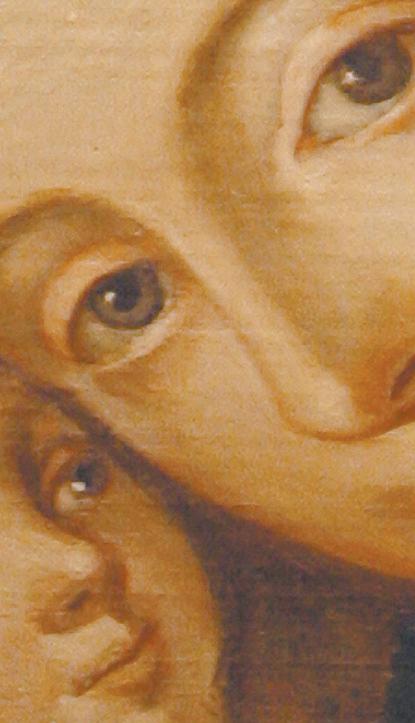
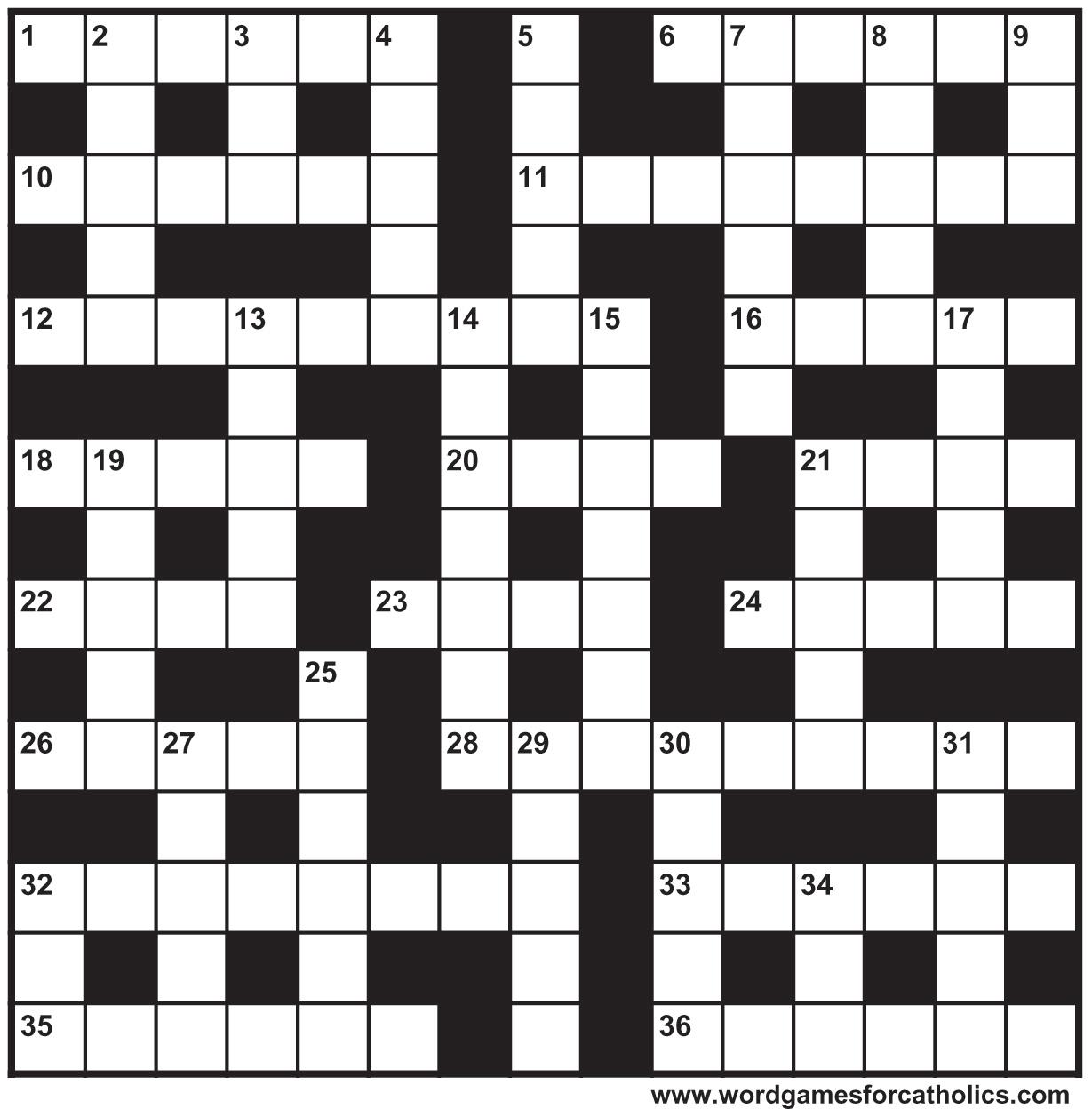
ACCOMMODATION
HOLIDAY ACCOMMODATION
ESPERANCE 3 bedroom house f/furnished. Ph: 08 9076 5083.
GUADALUPE HILL TRIGG www.beachhouseperth.com
Ph: 0400 292 100.
AVAILABLE IN NORTH PERTH
AND NORTH BEACH. Rent negotiable according to circumstances. Enquiries to phone 08 9448 8109.
HEALTH
PSYCHOLOGY and PSYCHOTHERAPY
www.peterwatt.com.au
Ph: 9203 5278.
MASSAGE BY QUAL LADY for neck, back & sciatic. 22 years’ experience. Ph 9444 4409.
LOSE WEIGHT safely with natural products. Free ongoing support. 02 9807 5337.
LAWNS
WRR LAWN MOWING and Weed Spraying. Get rid of Bindii & Jojo clovers, city of Stirling only. 9443 9243, or 0402 326 637.B
BABYSITTER
Available day or night, 18 year old committed Catholic with own transport. Call Ben McCabe 0451 064 298. USINE
BOOK BINDING
BOOK REPAIR SERVICE
New Book Binding, General Book Repairs, Rebinding, New Ribbons; Old Leather Bindings Restored. Tydewi Bindery 9377 0005.
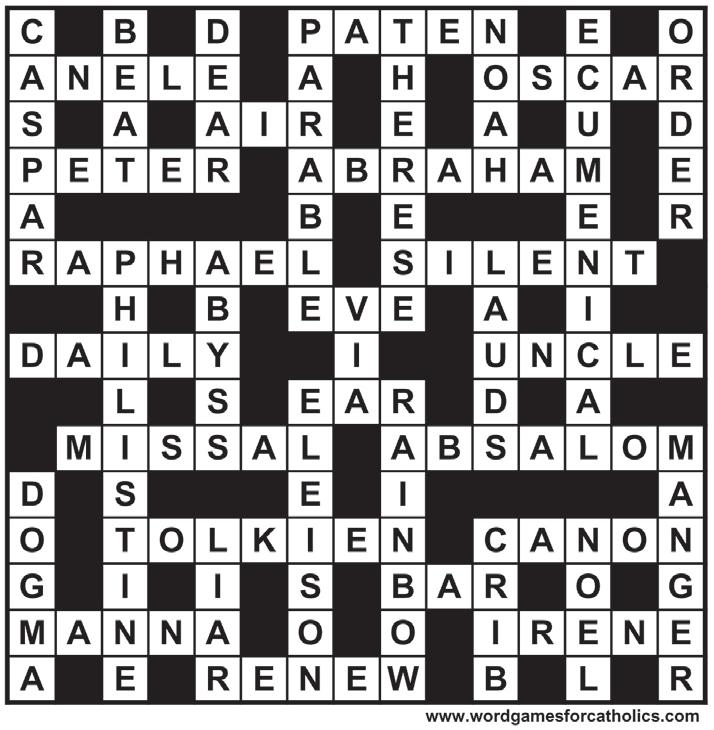
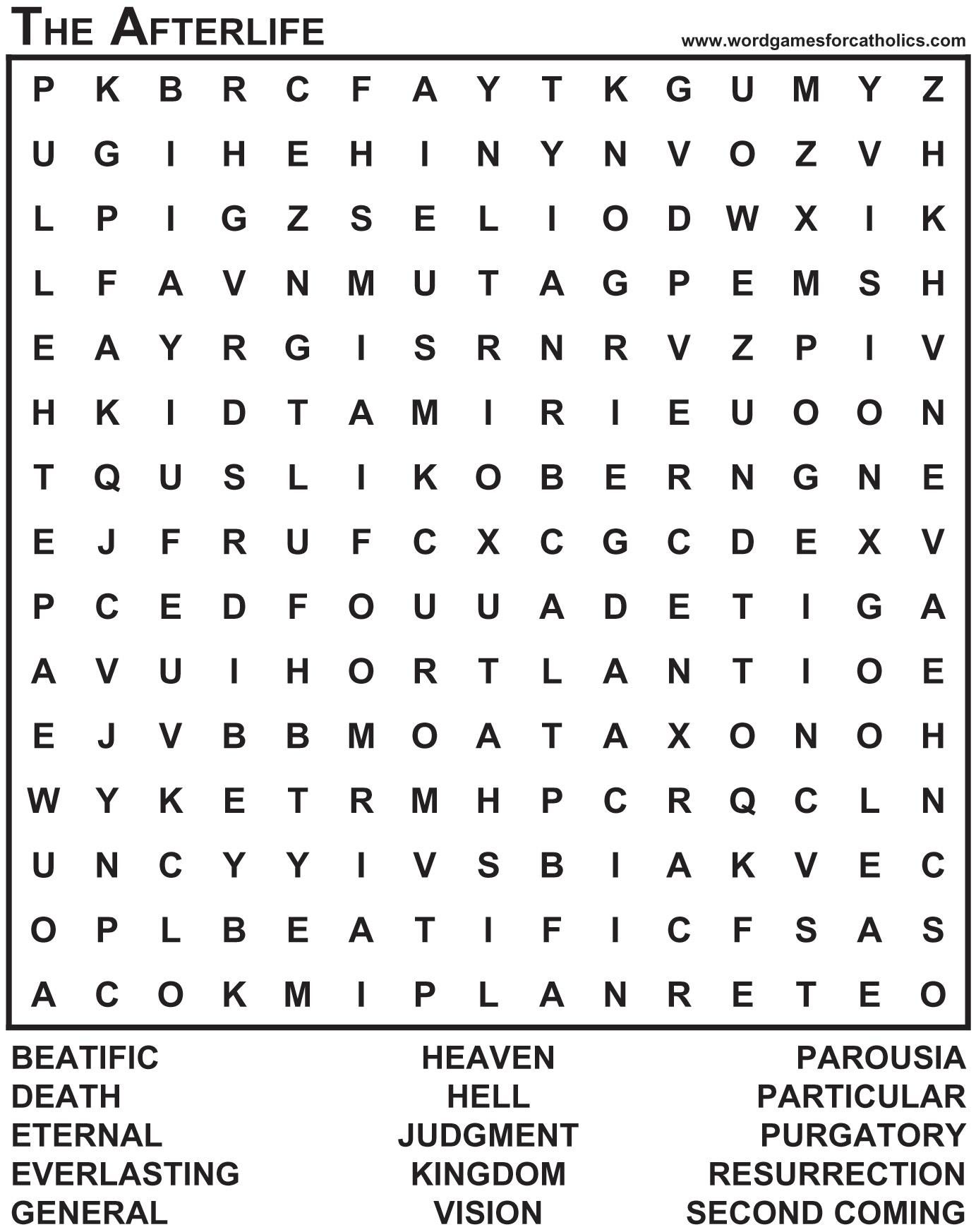
OTTIMO Convenient city location for books, cds/dvds, cards, candles, statues, Bibles, medals and much more. Shop 108, Trinity Arcade (Terrace level), 671 Hay Street, Perth. Ph: 9322 4520. Mon-Fri 9am-6pm.
RICH HARVEST YOUR CHRISTIAN SHOP Looking for Bibles, CDs, books, cards, gifts, statues, Baptism/Communion apparel, religious vestments, etc? Visit us at 39 Hulme Court (off McCoy St), Myaree, Ph: 9329 9889 (after 10.30am Mon to Sat). We are here to serve.
KINLAR VESTMENTS Quality hand-made and decorated vestments: Albs, Stoles, Chasubles, altar linen, banners etc. 12 Favenc Way, Padbury. By appointment only. Ph: Vicki 9402 1318 or 0409 114 093
SETTLEMENTS
ARE YOU BUYING OR SELL
ING real estate or a business? Why not ask Excel Settlements for a quote for your settlement. We offer reasonable fees, excellent service and no hidden costs. Ring Excel on 9481 4499 for a quote. Check our website on www.excelsettlements.com.
FURNITURE REMOVAL
ALL AREAS Mike Murphy Ph: 0416 226 434.
WANTED
Haddons’ translation of St Augustine “On the Trinity”. Post to 19 Lorikeet Loop, Broadwater WA 6280 or Ph: 9754 4069.
TRADE SERVICES
CATHOLICS CORNER Retailer of Catholic products specialising in gifts, cards and apparel for Baptism, Communion and Confirmation. Ph: 9456 1777. Shop 12, 64-66 Bannister Road, Canning Vale. Open Mon-Sat.
BRENDON HANDYMAN SERVICES Home, building maintenance, repairs and renovations. NOR. Ph 0427 539 588.
PLASTERING homes and renovations. Phone Neil 9390 6333.
BRICK REPOINTING Ph: Nigel 9242 2952.

BANGKOK (CNS) - Anti-government protesters and the Thai army prevented a Catholic-run charity and other nongovernmental organisations from rescuing women and children trapped within a commercial district of central Bangkok as clashes between the two sides escalated.
“We had a meeting with several children’s NGOs in the area to discuss bringing children, women and elderly people in the protest areas to safe places,” an unidentified staff member of the Redemptorist-run Mercy Centre told the Asian Church news agency UCA News on 17 May. “But we found that we could not do that because all
PERROTT PAINTING Pty Ltd
For all your residential, commercial painting requirements. Ph: Tom Perrott 9444 1200.
PICASSO PAINTING Top service.
Ph: 0419 915 836, fax 9345 0505.
MINI EXCAVATOR HIRE
Trenching and civil works. Daniel Mob: 0428 170 379.
THANKSGIVING
Thanksgiving to Jesus, Mary, St Joseph and Blessed Mary MacKillop for prayers answered. R L Cruze
TO LET
Mt Hawthorn area 3 x 1 Duplex
(Unfurnished) $350 PW. Ph 0410 222 398 Approx 3 to 6 months.
BEAUTY
Complimentary facial and skin care update. Great Mother’s Day gift. Ph Rose 0417 905 505.
IN MEMORIAM
Lee-Chi, Mary Rose of Broome. Called to God on 7 May 2010. We have been blessed especially with you in our lives. You will be treasured forever in our hearts Eternal rest in the Peace of God. Your beloved husband, Francis, and loving family.
THANKS
Thanks to Our Lord and Blessed Mother, Saints Joseph, Anthony, Jude, Therese of Lisieux and Blessed Mary MacKillop for a great favour granted. G.
EFFECTIVE
Your advertisement could go here. Your advertisement could go here. Your advertisement could go here. Your advertisement could go here. Your advertisement could go here. Your advertisement could go here. Your advertisement could go here. Your advertisement could go here. Your advertisement could go here.
entrances were blocked (by the army),” said the staff member said, adding that protest leaders also were approached, “but they did not allow people to be brought out due to the situation of mistrust.” Fighting between the army and thousands of Red Shirt protesters - who have been holed up for over a month in a central commercial district - reignited on 13 May when security forces tried to end the occupation. The renewed violence, which left at least 35 people dead and more than 300 injured, prompted Thai Catholic leaders to issue a plea for calm and a return to negotiations. The president of the country’s Bishops’ conference said he feared “the country is at the beginning of a civil war.” Archbishop Louis Chamniern Santisukniran of Thare and Nonseng called for negotiations to begin anew, saying that “an intervention of religious leaders might help to explore new avenues of dialogue and mediation and provide a peaceful solution to the crisis,” reported Fides, the Vatican’s missionary news agency.
AROUND SIXTY young people gathered after the Sunday 6pm Mass at host parish St Simon Peter Ocean Reef on 16 May for CYM’s monthly Sunday Sesh - this month focussing on “Understanding the Virgin Mary - Queen of All Hearts”.
Guest speaker Franciscan Friar of the Immaculate, Fr Sharbel Mary Haward FI, discussed the role of Our Lady in salvation history and the role of Marian devotion such as the Rosary in our lives.
When we pray the Rosary, we are reflecting on the life of Jesus with Our Mother, he said.
After this formation session, CYM youth ministry worker, Catherine Gallo Martinez, spoke personally of the role of Marian devotion in her life.
Later, those gathered broke up into small groups to discuss the extent of Marian devotion in their life.
While many people shared that they’d never really been properly introduced to Marian devotion, or that they’d always seen it as something extra to the faith, practiced by older people, many were open to hearing more about Marian devotion and what it might mean for their own prayer life, Sunday Sesh facilitator and CYM youth ministry worker, Tom Gourlay said.
“Some shared that they’d only really had to deal with Marian devotion when challenged by Protestant friends. Others shared about the fruits that they’ve experienced through things like praying the Rosary, or practising a Marian consecration,” he said.
The session closed with a procession to the new Marian chapel of St Simon Peter church for a decade of the Rosary, the second glorious mystery, the Ascensionaptly chosen for the Feast of the Ascension the Church celebrated on 16 May.
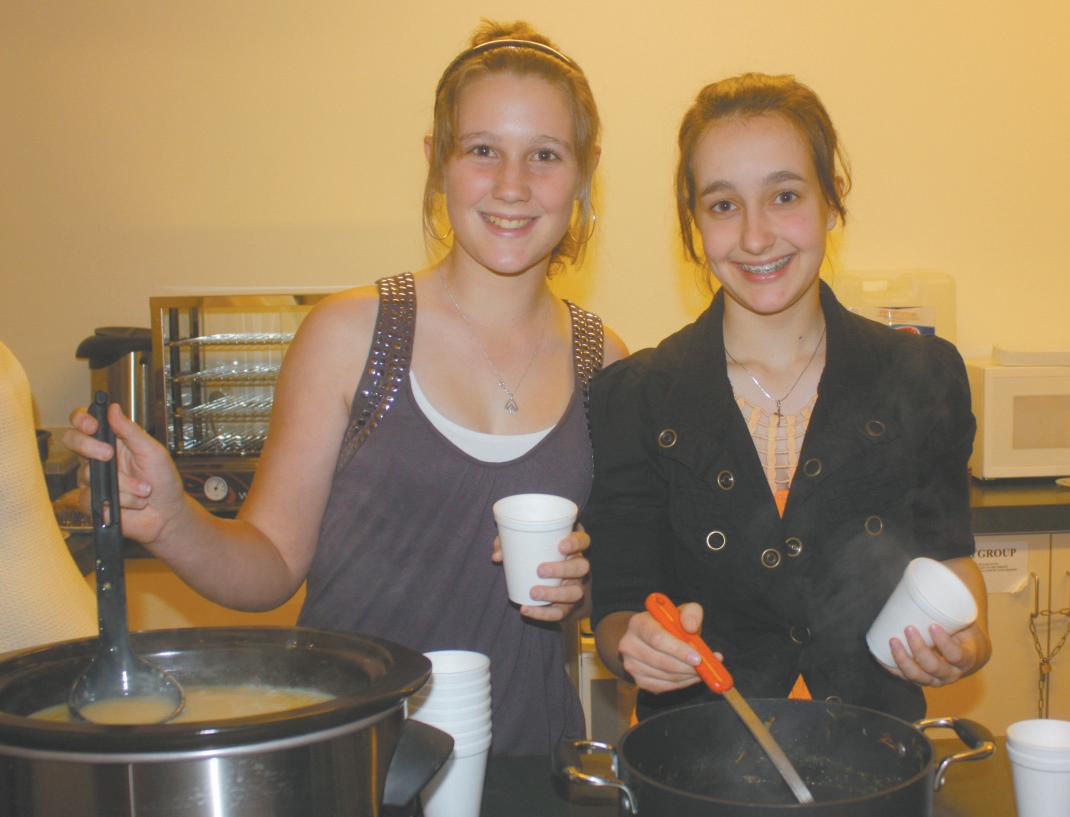

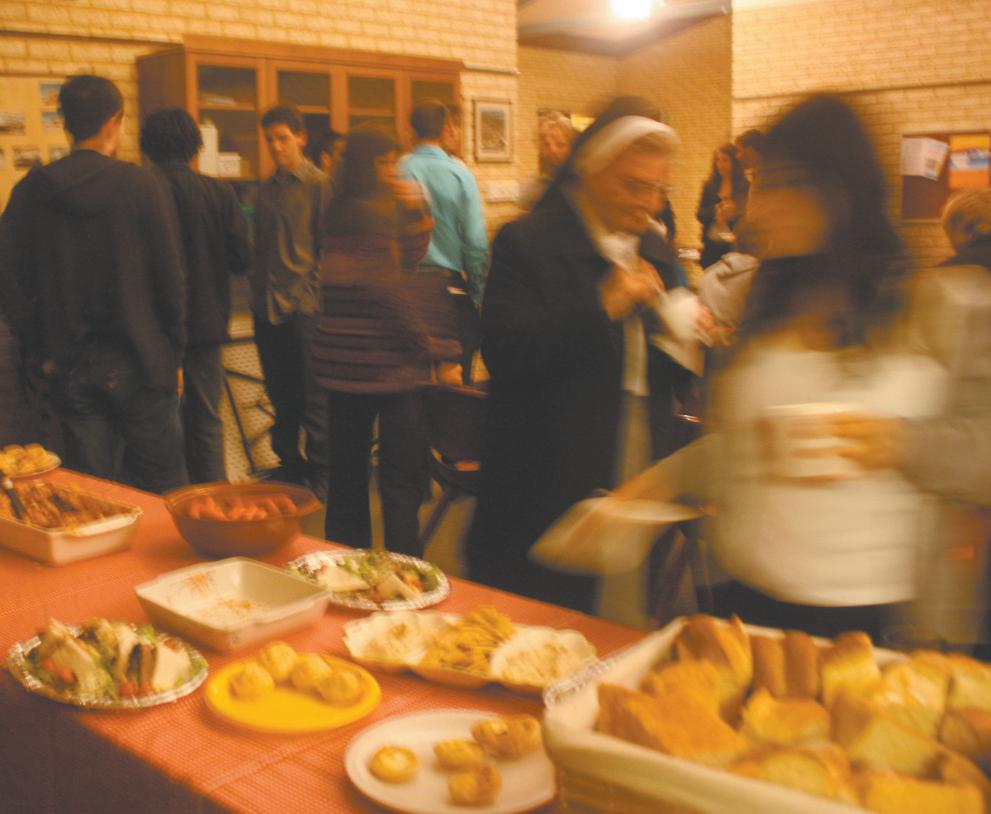
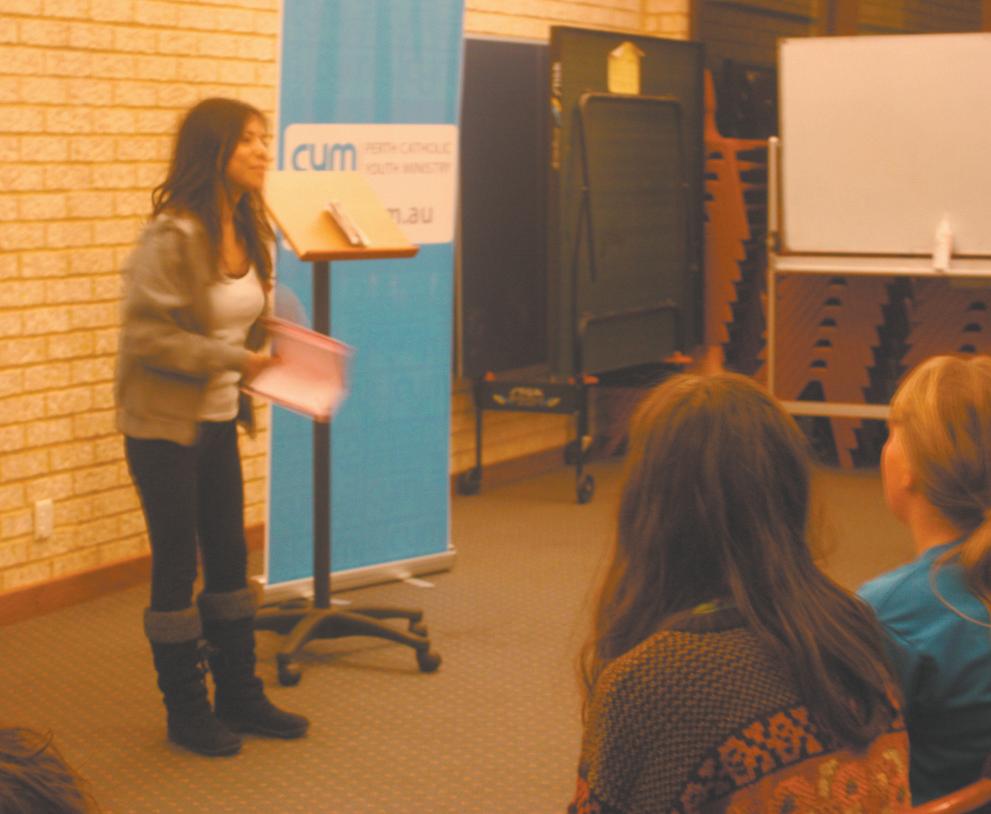




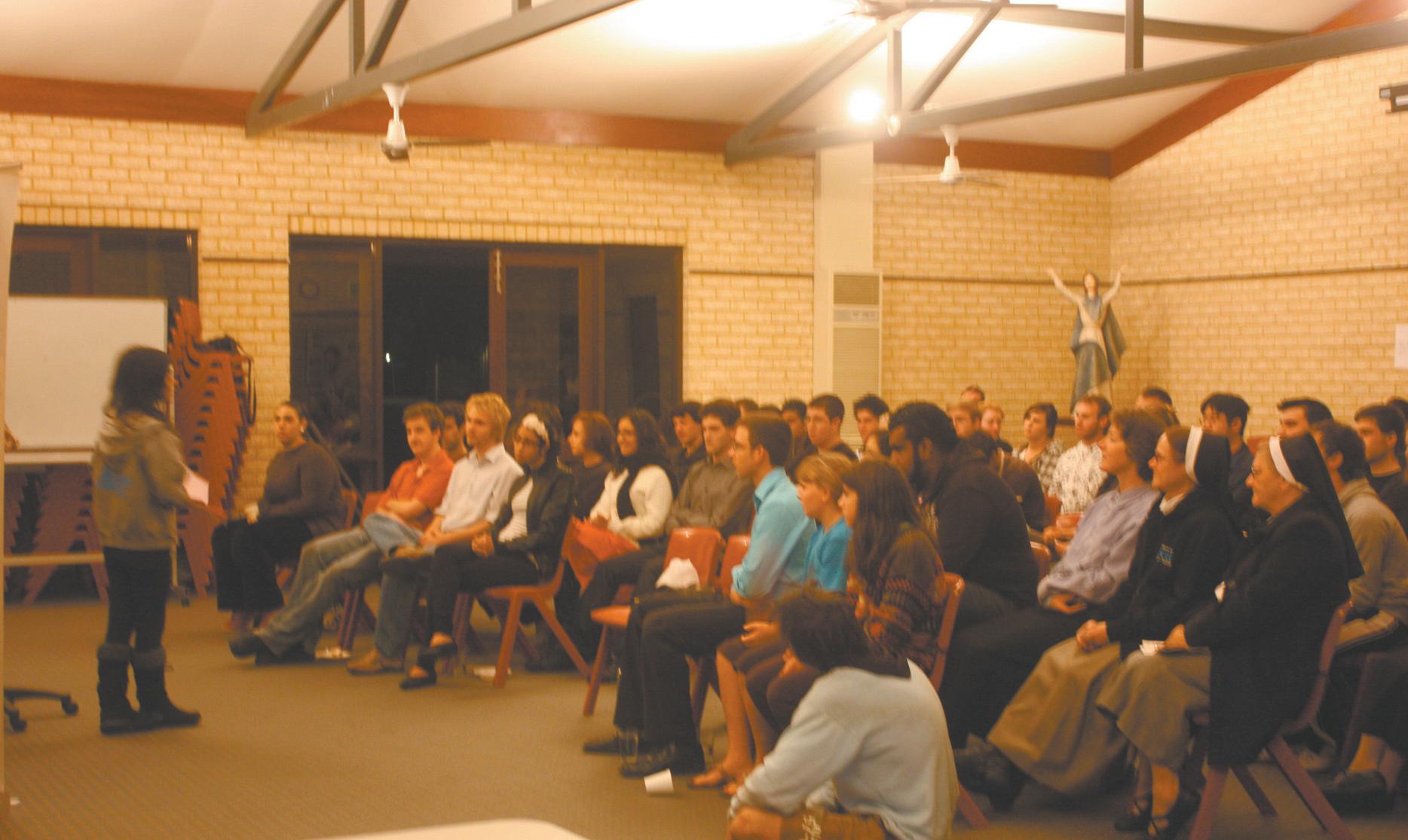
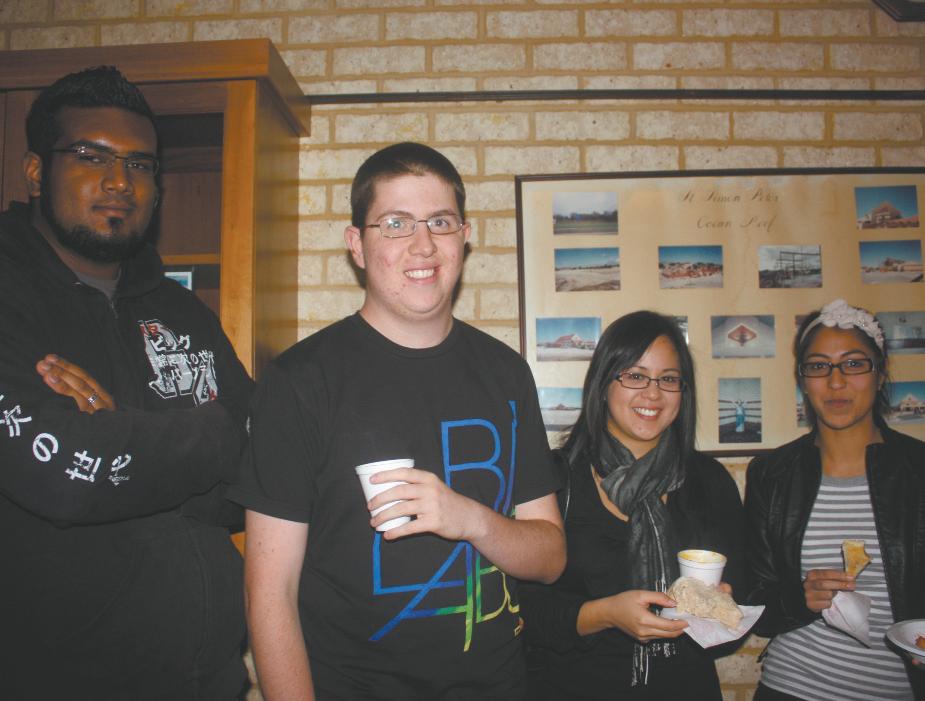





The Parish. The Nation. The World. Read it in The Record.




